From Cradle to Grave (Churches and Cemeteries)
Warwick street scene on a late-1800s postcard. Courtesy G Steven.
by Linda Koolen
When people began to settle in Township the neighbours would meet together in each other's homes for Sunday worship. Many upheld the Sabbath Day strictly, doing only the necessary chores. After they had built houses, and sometimes shelter for their animals, they began to think about building places of worship. The first churches represented people of many faiths. Searches in the earliest records revealed the following information.
Rev. James Evans, a Methodist missionary at the Sarnia Reserve, made occasional trips inland as far east as Warwick, preaching in private homes.
The Radcliff brothers, army officers at Adelaide Village, sent word to their younger brother, Rev. John Radcliff, that Anglican missionaries were needed in Canada. When Rev. John arrived, Rev. Dominic Blake had already established St. Ann's Anglican Church in Adelaide Village in 1831, so Rev. Blake sent Rev. Radcliff further west. In 1834 Rev. Radcliff established St. Mary's Anglican Church in Village. At first services were held every Sunday in Burwell's Tavern, located at Lot 10, Con. 1 NER in the village. Both Rev. Blake and Rev. Radcliff held church services in a large room in the home of Captain and Mrs. Alison, located on top of the hill, just west of the Adelaide- Townline (Sexton Rd.) on the north side of the first concession (Egremont Rd.).
Timothy Gavigan, in an interview by Kate Connolly recorded in the Lambton Settlers Series, told how he came as a boy with his Irish pioneer family to a farm in about 1850. He remembered:
Why there wasn't even a priest or a clergyman in this whole district then. Father Kerwin came to the settlement once a year from Sarnia and held mass in an odd house or two. He was young or he never could have stood the long ride on horseback through the woods with only a blazed trail for a road.
The churches and schools in Village were among the first in Lambton County. By 1843 St. Mary's Church congregation had become strong enough that they built a frame church just southwest of the present church in Village.
The earliest reference to the Wesleyan Methodist Church in the Watford area is the building of two log churches in 1844. They were on the 2nd and the 6th Lines SER (Zion Line and Churchill Line) of Twp. After they were built they were both dedicated on the same day, under the ministry of Rev. William Dingman.
The best-known itinerant or “saddle bag” preacher was Joseph Russell “Uncle Joe” Little (1812–1880), born in Longford County, Ireland. He originally came to Canada in 1833 to become managing agent of Arthur J. Kingstone's 1600 acres in Twp. Converted to Wesleyan Methodism before he left Ireland, he preached in homes and barns in Lambton (Bosanquet, Brooke, Enniskillen and Twp.) and Middlesex (Adelaide, Caradoc and Williams Twp.). By 1844, Little lost his position as managing agent because the Kingstone estate had been losing money for eleven years: Little had been too generous, giving away food and clothing to those less fortunate.
Kingstone sympathized with Uncle Joe and gave him two hundred acres (Lot 5, Con. 6 NER) on the condition that Little not be allowed to sell it. Then Little was hired as tax collector for Twp., but he used his salary to pay the taxes of the poor. Twp. later sold his farm for back taxes and debt. It was at this point that Little considered himself free to do the Lord's work and he adopted the life of a homeless, itinerant, lay preacher and pastor, riding on his faithful pony, Toby. He assisted ordained ministers, taught Sunday school and served as trustee on the Circuit. Church records list him as a steward at Plympton Ridge and a member of building committees at and Watford in 1871. Little spent the next few years in Eastern Ontario, then went to the Fox Bay Mission on Anticosti Island in 1879, where he died in January 1880. The people of created the Joseph Little Memorial Fund to bring his body back to Lambton, so that his final resting place would be the Cemetery.
A young Congregationalist minister named Rev. Daniel McCallum came to the Village area around 1850. He tramped through the bush from clearing to clearing, preaching to settlers in homes, taverns and schools.
Hoping to establish a system of large landowner estates worked by tenant farmers, Arthur J. Kingstone brought out numerous Irish Roman Catholics to work his farms, and a Roman Catholic Church was built on 9 Sideroad ( Village Rd., near the present Conservation Area.) which served the community until 1875. The first Roman Catholic Church in Watford was erected in 1875 and was named “Our Lady Help of Christians.”
In 1867 the first Church of England service in Watford was held in a public hall over Stickles' store. The Rev. John Gibson, rector of , conducted the service.
The Salvation Army first appeared in Watford in March 1884. Its first officers were “the three Minnies”: Minnie Laurance, Minnie Gibbs and Minnie Halton. In 1886 the Barracks opened on the south side of St. Clair St. The Salvation Army had a good band and played on the street on Saturday nights. When membership fell off the building was closed.
On the following pages we attempt to tell some of the early history of the churches in Twp. Often the churches were the centre of the community, especially for social gatherings. With changing times many of these buildings have disappeared from the local landscape.
For many years the churches within Arkona co-operated in various church-centred activities, principally the annual Vacation Bible School. In about 1967 the ministers organized themselves into a Ministerial Association. Other co-operative activities have at times included a Good Friday Service, Memorial Day or Decoration Service at the cemetery, Remembrance Day, World Day of Prayer and the Summer Park Services. In June 2007 the three ministers/pastors of the village — Baptist, Elim Bible Chapel, and United Church — participated in the Decoration Day Service at the Arkona Cemetery. A group known as the Interdenominational Faith Council organizes similar activities in Watford.
Some Forest churches were, and still are, located within the original Twp. boundaries. These are described in the chapter on Forest prepared by Lew McGregor.
ANGLICAN
Grace Anglican Church (1882–1962)
Between 1870 and 1882, when SS#12 school was built on the north-east corner of Lot 24, Con. 5 SER, there were residents on the 4th Line SER who attended services in the schoolhouse, probably under the direction of the rector of St. Mary's, Village. When Rev. P. E. Hyland came to the and Watford churches in 1879, he helped the residents of the 4th Line establish their own church.
In 1881 these families erected a frame building for worship on the farm of the Clines, Lot 28, Con. 5 SER, just east of 27 Sideroad. By 1887 the church was called Grace Anglican Church, .
The 1887 annual report showed that there were 13 families as members and that five people had been baptized. There were 22 communicants, two Sunday school officers and 15 scholars. There had been 48 Sunday services. The value of the church building was $1500, the insurance was $800 and the church was in good repair. They reported “sittings” (seats) for 150, but later Synods reported 100. An organ had been purchased and paid for, a choir formed and a Sunday school organized. A Society of Christian Endeavours was started in 1893. In 1907 it was decided to brick in the white frame church after raising it onto a foundation. People remember Lloyd Eastabrook taking good care of the gasoline lamps after the coal oil lamps were replaced and before electricity was installed. Many were frightened of these lamps.
The local school served as a church hall for many activities. In the 1930s and 1940s there was an active Anglican Young Peoples' Auxiliary that took prizes in drama competitions, ball games and debating.
Grace Anglican Church celebrated its 60th anniversary with a special evening June 28th, 1942. By 1959–60 there were 17 families on the roll. In 1961 there were only nine church families and two individuals, one less than they had in 1898. The decision was made to close the church in 1962. Some of the church furnishings went to a new church being built in London and other equipment went to churches in need of it. The Grace Anglican Church building was purchased by Grace Canadian Reformed Church. Some Anglican 4th Line residents went to St. Paul's in Kerwood; others to Trinity Anglican Church in Watford.
Four members who grew up in Grace Anglican Church took special training and were recognised for doing God's work.
Thomas Buchanan Reginald Westgate (1879–1951) graduated from Huron College in 1896. His 45 years of missionary service took him over three continents, to places in South America, Africa and Europe. An honorary Doctor of Divinity degree was bestowed upon him by the University of Western Ontario in 1913. Dr. T. B. R. Westgate spent time in internment camps in Africa during World War I. In later years he was superintendent of the Indian Residential School Commission. In retirement Rev. T. B. R. Westgate, D.D. wrote several publications on religious topics.
Harrison Palmer Westgate (1878–1953), T. B. R.'s brother, graduated from the Ontario Agricultural College in 1898. Later he entered Huron College and graduated with a L.Th. degree in 1905. While he was a student he was also a weekend clergyman. He served as rector, canon and archdeacon in parishes in Southern Ontario. He also received a Doctor of Divinity degree from the University of Western Ontario, in 1949.
LaVerne Morgan was the youngest son of Fred and Martha Morgan. He graduated from the University of Western Ontario and received his L.Th. from Huron College in 1947. As a minister he served various parishes in Ontario and the United States.
Norma Maxine Westgate was the tenth child of Alex and Cora Westgate. She graduated from Toronto General Hospital School of Nursing in 1951 and nursed in the North-West Territories from 1952 to 1959. She then studied at the Anglican Women's Training College in Toronto and the University of Western Ontario. Norma worked as a public health nurse and at the Children's Psychiatric Research Institute of the Ontario Society for Crippled Children.
St. Mary's Anglican Church, Village (1834–1995)
The history of the parish of St. Mary's Anglican Church, Village, dates back to 1834 when Rev. John Radcliff, a graduate of Trinity College, Dublin, Ireland, arrived in . At first he held services in the homes of the scattered settlers and also in Burwell's Tavern. He also conducted the occasional services of marriage, burial and baptism.
Glebe or Clergy Reserve: From 1816 to 1839, while the Rev. John Strachan was an influential member of the government of Upper Canada, grants of land known as “glebes” or “clergy reserves” were set aside for the purpose of providing a supplement to the salaries of Protestant clergy. It was under the then Governor of Canada Sir John Colborne that the Glebe Trust was established. When it was surveyed in 1832, Twp. had certain lands reserved as glebes. Many of the original pioneers were members of the Church of England, and their rectors took advantage of this government plan. But, since the church was not expected to complete the necessary settlement duties to obtain title to these lands, the clergy reserves created difficulties for the settlers who worked hard to complete their duties, especially to clear the roads in front of their property. Realizing this scheme was not working, the clergy reserves were sold in 1871. The resulting funds were set up as a Diocesan Rectory Trust Fund.
Rev. Radcliff helped to secure a Glebe (Clergy Reserve) or grant of a 200-acre property, Lot 15, Con. 1 SER. It was worth only two or three dollars per acre, but became more valuable in time and was later sold, with the proceeds providing an endowment. Radcliff had land cleared to plant crops and had a red brick house built on it. The bricks were made on the spot. The upstairs room was lined with chalkboards. Here Radcliff tutored high school students who wished a higher education.
In the 1850s, under the direction of Rev. Mortimer, the bricks and other materials were removed to Village and used to build a new cottage, which was later known as the “Old Rectory.”
Rev. D. Blake of Adelaide had supervision of the parish beginning in 1836. Rev. Arthur Mortimer became the second resident clergyman. The frame church, on Lot 7, Con. 1 SER, was built in 1843 through the efforts of Rev. Mortimer. A choir was organized in 1847. In 1851 Rev. Mockridge wrote to Bishop Strachan stating that the Rector of the parish, the Church Wardens and members of the congregation had finished the church, fenced the grave and church yard, and had paid all debts. He then requested that Bishop Strachan consecrate the church by the name of St. Mary's. 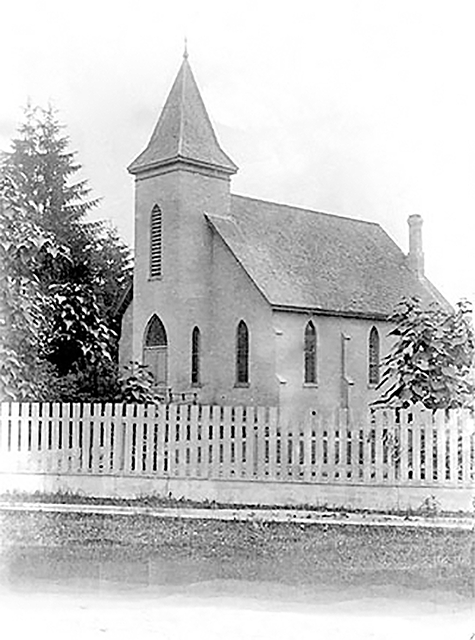
St. Mary’s Anglican Church, Warwick, before church bell was installed. Courtesy P Janes.
An organ was not purchased until 1872. It cost $50, plus $1.96 freight and cartage to bring it from Guelph.
In 1886, Watford was separated from and formed a new parish with St. James Church, Brooke Twp. A new rectory was then built at , on a two-acre lot donated by Charles J. Kingstone at Lot 9, west of Village. Known as the Kingstone Memorial Rectory, it was first occupied by the Rev. P. E. Hyland. In 1898 a disastrous fire destroyed the building, along with the parish register and records.
The original frame church was replaced by a brick one in 1889. It was begun through the efforts of Rev. P. E. Hyland and completed while Rev. H. A. Thomas was Rector. It was built at the corner of Digby St. and London Line in Village. The stained glass windows in the chancel were in memory of Arthur J. Kingstone; two other stained glass windows were in memory of the Carroll, Kenward and Tanner families, all pioneers.
When the brick church was built, the original frame church was moved south of St. Mary's cemetery. Later it was bought by Robert McKenzie and moved to his property.
Rev. William Murton Shore was rector from 1904 to 1922. During his term, a new large church shed was built; the ladies served bountiful suppers there. Funds were raised to buy a church bell. The envelope system for church support was first used in 1911. About 1922 the Women's Guild was organizes to work for the upkeep of the church and rectory.
Chapel of Ease: When Anglican churches, especially rural ones, started closing due to declining membership, they became “chapels of ease” or places for prayer and preaching but places that were dependent on neighbouring churches for most services. Often these churches had a cemetery as part of their property. Church funds are available to maintain the church building, the grounds and the cemetery. The chapel of ease is obliged to hold one service a year.
By 1973, membership was declining at St. Mary's and the rectory was sold. Tim Hill, a Huron College student living in Strathroy, served the parish at this time. Later, a retired priest, Rev. W. F. Browne, took the services. Canon Gordon Houghton, after his retirement, became the priest- in-charge in 1979.
The 150th anniversary was celebrated in 1984. When Canon Houghton announced he was no longer able to serve as rector at the end of June 1995, the members decided to close St. Mary’s Church and to attend Trinity Anglican in Watford. The Diocesan Executive gave permission for St. Mary’s to become a chapel of ease as of September 30, 1995. It holds an annual memorial service each June.
St. Paul's Anglican Church, Wisbeach (1856–1971)
When settlers first moved to this area, they held church services in their homes with their neighbours. Itinerant clergymen visited, travelling either by foot or on horseback. When a church was established at the Parish of St. Anne's in Adelaide in 1833, Rector Rev. Dominic Blake served the community at Wisbeach as well.
St. Paul's Anglican Church was organized in 1856 in the Town of Wisbeach (as it was referred to at that time), on the highest point of land between London and Sarnia. When St. Paul's was built, it was associated with St. Mary's in Village, a partnership that lasted many years.
One of the early settlers in the Wisbeach area was Captain Harry Alison (1774–1867), who in 1834, with his wife and family, took up a Crown grant consisting of 600 acres in Lots 28, 29 and 30 on Con.1 NER. In 1856 Thomas and Frances (Alison) Rothwell sold three-fifths of an acre of land on the northwest part of Lot 28, Con.1 SER, for $90, the land to be used for a church. The first service was held in January, 1857.
St. Paul's, Wisbeach, was one of the numerous parishes to receive the benefit of a Glebe Trust. Lot 26, Con.1 SER was designated as belonging to the parish in 1856 and was situated one-half mile west of St. Paul's Church. In 1866 more property was acquired to enlarge the church. In about 1870 the church was either enlarged or rebuilt. In 1889 Rev. P. E. Hyland wrote to the synod office, pointing out that the building was complete and all debts paid, and asked that it be consecrated. Right Reverend Bishop Maurice Baldwin conducted the Service of Consecration on February 9, 1890.
In 1906 the frame structure was covered with white brick veneer, memorial stained glass windows were installed, and new pews were included with the interior decorating. During this time of remodelling services were held in the local school. Rev. W. M. Shore was rector at this time and served the parish for 18 years. An organ was used during services for over 80 years.
St. Paul’s Anglican Church, Wisbeach, after 1906. Courtesy M Williams.
A small shed was built to provide some protection for horses. In 1912 a larger, all-enclosed shed was built, with no supporting posts in the centre, so that it was easy buggies to enter and exit. The congregation used this shed for many suppers and gatherings. They had an old wood- burning cook stove set up in one corner with the stove pipe going out the end of the shed. This was used to keep the food warm until it was needed. In 1952 when the horse shed was no longer needed it was sold and moved, to be used as a saw mill.
The Women's Auxiliary did much quilting and sewing for the natives of Walpole Island. There was an active Anglican Young Peoples' Auxiliary.
This church was active for over one hundred years. Due to a diminishing congregation St. Paul's was closed for regular services in 1971 and became a chapel of ease with an annual memorial service.
St. Stephen's Anglican Church, Arkona (1906–1972)
Anglican services were first held in Arkona in 1906 in the Presbyterian Church building. Shortly after, the Anglican congregation bought a lot on the southern edge of Arkona, partly in the village and partly in Twp. The building committee then bought an unused church in Nairn which they dismantled and moved to Arkona, about 20 miles, on horse-drawn wagons. They built a foundation and hauled bricks from the McCormick brick yard in Twp.
St. Stephen’s Anglican Church, Arkona. Courtesy L Koolen.
During construction the building was wired for electricity. The new church was the first in the village to be electrically lighted by power from the recently-built Rock Glen Power Plant. The parishioners donated the furnishings. On December 15, 1907, the beautiful church was officially dedicated by the Bishop of Huron, David Williams.
The St. Stephen's congregation was very active. They had a Women's Auxiliary, a Sunday school, a Brotherhood of Anglican Churchmen, a choir and organist and were served by a number of ministers. Mrs. Jessie (Ridley) McAdam played the organ for more than 43 years.
Reginald Baxter and Florence Thorne were the first couple to be married in St. Stephen's, on October 25, 1916.
In 1972 the congregation voted to close their church. The closing service was on November 15, 1972. St. Stephen's has been officially designated a chapel of ease, and annually holds one or two services. On Sunday, June 3, 2007, The Right Reverend Bruce Howe, Bishop of Huron, presided at the service to celebrate their centennial.
Trinity Anglican Church, Watford (1867–)
The first Church of England services were held in Watford in 1867, the year of Confederation, in a public hall over Stickles' store, led by Rev. John Gibson. In 1886 the parish was made up of Watford and Brooke. The first church was built on the southwest corner of Ontario and St. The 1877 Lambton County Directory describes it as “a handsome brick, gothic style [church], built in 1868 at a cost of $5,000. Seats 600.” Then, in about 1890, a large rectory was built.
At a vestry meeting in 1912, it was decided to undertake the building of a new church, at a cost not to exceed $6,500. In September of that year, the cornerstone of the present Trinity Anglican Church was laid. The church was built on the north-west corner of Main and St. Clair St., at 5331 Nauvoo Rd., on property purchased from George Howard. The contractors were Henry Hume and Arthur Higgins. William Marwick did the brick and cement work. The church was built of red pressed brick on medusa cement blocks. London slaters did the roof. T. Dodds and Son did the tinwork, glasswork and the eavestroughing. F. J. Hughes did the painting and decorating. Many parishioners donated furnishings and stained glass windows. The old church property was sold and the building torn down.
Inside original Anglican Church, Watford. Courtesy D Hollingsworth.
Trinity Anglican Church was dedicated on March 30, 1913 with three services. The choir sang special music in their new surplices and cassocks, under the leadership of T. A. Adams, accompanied by organist Bury Banks. The church ladies catered a dinner on the second Monday after Easter. These dinners became an annual event.
In 1918 Jubilee services were held to mark the 50th anniversary of the consecration of the first church building in 1868. In 1952 a set of Minshall chimes was installed. The church was redecorated in 1953. A parish hall was added in 1960, consisting of two large rooms. The one on ground level is the auditorium used for meetings and banquets. The Anglican Church Women use it when they cater to the Rotary Club weekly dinner meetings and other banquets. The large room upstairs is known as the Church Parlour and is used by the afternoon and evening Guilds. The women of the Chancel Guild take charge of the Holy Table for Communion services and clean the brass and the chancel. The holy vestments and the silver service are carefully kept in the sacristy.
Throughout the years Trinity Anglican has been blessed with a Sunday school. In the old church, Sunday school was held in the afternoon. For many years the Sunday school had an annual picnic at the lake for children and parents. Just before Christmas the children would put on a concert.
When Trinity Anglican Church celebrated their 130th anniversary in 1998, Diane (Hollingsworth) Wright, a local artist, was commissioned to draw black and white ink prints of each of the five Anglican churches in the area: Trinity in Watford, St. James in Brooke, Christ Church at Sutorville, St. Paul's Church at Wisbeach, and St. Mary's Church in Village, since all these congregations came into Trinity Anglican as their church closed.
BAPTIST
Arkona Baptist Church (1836–)
Although not located right in Twp., residents have attended Baptist church services in Arkona. For this reason a short history of it is included in this book.
Early residents gathered at the home of Nial Eastman for Baptist church services, beginning in about 1836. The pioneers built a log church 30 feet by 40 feet near the present cemetery on the eastern edge of Arkona on Townsend Line. In 1840 the worshippers who gathered in this small building were organized into a Baptist church.
Arkona Baptist Church. Courtesy L Koolen.
A new “white brick” church, built at the corner of Church and Smith St., was opened in 1859. It was called the Bosanquet Baptist Church until 1866, when it became the Arkona Baptist Church. A parsonage was provided for the pastor, in various houses.
When the church building was found to be unsafe, a committee was formed to build a new church. Services were discontinued in May 1912, and the Baptists were given use of the Presbyterian Church.
Construction began immediately, with the cornerstone being laid Oct. 8, 1912. By February the building was sufficiently completed to hold services in the basement. The official opening and dedication of the present red brick structure was held June 1, 1913.
Over the years there have been several organizations within the church, including Baptist Young People's Union, Mission Circle and Ladies' Aid. Many dedicated men and women from this congregation have devoted their lives to full time service as ministers, ministers' wives or missionaries.
Baptist Church, Watford (c.1896–1929)
Although the County of Lambton Gazetteer, 1864, records that a Baptist minister named J. M. Truesdell was in , the first Baptist church in Watford was only built around 1896. It was a white frame building halfway between Main St. (Nauvoo Rd.) and McGregor St. on St. Clair St. Rev. Siple was the first minister found in records. At one time there was a large congregation, but as the years passed the numbers dwindled. By 1929 they were forced to close the doors. In 1932 the Watford Gospel Brethren purchased the building.
Faith Evangelical Baptist Church (1961–1980)
Faith Baptist Church on Hwy 79 (Nauvoo Rd.) in Watford began as a branch of Bethel Baptist Church, Strathroy, in November 1961. Rev. Roy Lawson, the pastor of Bethel Baptist, came to Watford to hold afternoon services in the Canadian Legion Hall. In June 1962 mid- week prayer meetings were begun in the home of Mr. and Mrs. John Healey. Bible school was begun that September in the home of Mr. and Mrs. Ivan Morgan. The Bible school soon grew too large for individual homes and was relocated to the Legion Hall.
Mr. Ralph Thornton, a student at London College of Bible and Missions, became the pastor in 1963 and services were changed to Sunday morning. Mr. James McColl became pastor in 1964.
A church building fund had been established at the beginning of the church history in 1961. Early in 1965 that fund was used to purchase a building from the Mount Brydges Pentecostal Assembly and to relocate it to the property. Scotch Line Baptist Church donated pews, a pulpit and a communion table. Local members donated the electric organ. Later in 1965 the church was dedicated. The Bible School grew and new departments were added. In 1971 the word “Evangelical” was added to the church name.
Beginning in 1972, drive-in services were held at Central School in the summer. More land was added to the church property, to make about five acres. The ladies started an interdenominational Coffee Hour.
In 1975 the congregation purchased the Zion United Church building and moved it onto a new foundation in front of the former church and re-bricked it. The former church was covered with aluminum siding and used as a Christian education centre. A foyer joins the two buildings. In 1978 a parsonage was built on property adjoining the church. The church closed in 1980.
BIBLE CHAPEL
Arkona Bible Chapel/Elim Gospel Hall/Elim Bible Chapel, 1890–)
The congregation of Christian Brethren began in Arkona before 1890. Meetings were held above a furniture store. Following tent meetings at Hungry Hollow in the summer of 1895, a modest frame building was moved to the site where the tent had been, near the Ausable River, to be used as a place of worship.
In June 1912 a new cement block building was officially opened in Arkona, west of the main crossroads. It was called Elim Gospel Hall and later Arkona Bible Chapel. They had the breaking of the bread sacrament on Sunday morning, Sunday school in the afternoon, a gospel meeting Sunday evening and a mid-week prayer meeting. Itinerant ministers often preached there, but two lay ministers, George Marsh, and later his brother, Herb Marsh, often led the services.
Elim Bible Chapel, Arkona. Courtesy L Koolen.
The Arkona Bible Chapel Trio sang gospel music in many places for about 40 years, finally retiring in 1988. They were Bert Field, Don Marsh and Lorne Teeple, accompanied by Ursula Teeple. They made three long- playing records to sell to their audiences.
In the 1960s some of the children of the Arkona Bible Chapel Trio formed a group called The Revised Version, which played and sang gospel music that young people especially enjoyed. A trio of Steve Marsh, Ross Teep and Glen Teeple, called Elim Hall, toured in Canada and the United States from about 1984 until 1987, playing contemporary Christian music. They continued to play and sing until the early 1990s.
In 1973 construction was begun on a new structure of wood and stone, with a vision for the future. In 2003 they added a gymnasium. The congregation continues to worship and provide programs, especially for young people in the area.
CONGREGATIONAL
Zion Congregational (1839–1925) and Ebenezer Congregational (1870–1915)
Zion Congregational Church, at the north-west corner of the west half of Lot 16, Con. 2 NER, , was begun with a meeting in Enoch Thomas' home in 1839, when Rev. W. Clarke, a missionary from London, helped the people band themselves together in Christian fellowship under the name of the Congregational Church of and Bosanquet. Rev. L McGlashan, one of the first graduates of the Congregational College of British North America, came in 1841 to serve as their first minister. Due to failing health he resigned in July 1844 after establishing outposts at Watford and Ebenezer. It was during his term that an edifice was built on the east half of Lot 15, Con. 1 NER.
In 1852 Rev. D. McCallum assumed the Congregational Churches of Zion, Watford and Ebenezer. He was ordained in 1853 in the meeting house on the Main Rd. (Egremont Rd.). During his fifteen-year stay he established three more churches, at Forest, Lake Shore and Plympton.
Rev. John Salmon arrived in 1868. During his five years three new buildings were erected, at Zion, Watford and Ebenezer. It is thought the Ebenezer congregation may have worshipped in SS#1 school, which was situated on the north-east corner of Lot 6, Con. 3 NER.
Church Directory: FOREST, SALVATION ARMY: Services in the barracks every Thursday, Saturday and Sunday evg. BAPTIST: Services at 10:30 and 7. Sunday school at 2:30. Service at Uttoxeter appointment at 2:30. PRESBYTERIAN: Sunday service at 10:30 and 7. Sunday school at 2:30. Rev. James Pritchard, Pastor. CHRIST EPIS.: Service every Sunday at 11 and 7. Sunday School at 2:30. Rev. A. L. Beverly, Incumbent. METHODIST: Service every Sunday at 10:30 a.m. and 7 p.m. Sunday school at 2:30 p.m. Rev. R. Whiting, Pastor. CATHOLIC: Services every alternate Sunday at 10:30 a.m. and 7 p.m. Sunday school at 2:30. Revs. Hogan and Kennedy, Parish Priests. CONGREGATIONAL: Service every Sunday at 10:30 a.m. and 7 p.m. Sunday school at 2:30 p.m. Service in Plympton Congregational Church at 2:30. Rev. J. I. Hindley, Pastor. ARKONA, PRESBYTERIAN: Sunday service at 2:30. Sunday school at 1:30. Rev. A. S. Hannahson, Pastor. METHODIST: Service every Sunday at 10:30 and 7. Sunday school at 2:30. Rev. C. W. Bristol, Pastor. BAPTIST: Divine services at 10:30 and 7 o’clock every Sabbath. Sunday school at 9:30. Rev. Baldwin, Pastor. SOURCE: The Forest Standard, July 7, 1898.
In 1870 Adam Duncan and his wife gave a quarter acre on the south-west corner of their farm at Lot 7, Con. 5 NER to build a church. The deed shows the names of the trustees to be Humphrey Campbell, Duncan Brodie and James McLellan. The Congregationalists of the neighbourhood built a small frame church called Ebenezer Congregational Church. For a few years they shared their church with the Baptists, each holding services on alternate Sundays. In 1880, SS#19 school was built next to it. This little crossroads settlement on the corner of 6 Sideroad and 4th Line (Elarton Rd. and Birnam Line) became known as the Brodie Settlement because several families of that name lived nearby.
In January 1874 a call was extended to Rev. Robert Hay, a native, who was in Illinois at the time. The churches grew and flourished and it was decided to divide the work. Sometime prior to 1879 Watford and Zion became a separate charge. Rev. Hay continued to work with Forest and Ebenezer. In the Lambton County Directory of 1877 the Watford Congregational Church is described as a neat framed building that could seat 200.
Rev. H. T. Collwell came to Watford and Zion in 1879. When he resigned Rev. Robert Hay left Forest and Ebenezer and went to Watford and Zion. Services continued with various ministers. There was a very active Christian Endeavour organization at Ebenezer, attended by the young people of the community.
In March 1912 it was agreed that the four churches of Forest, North Plympton, Ebenezer and Lake Shore would unite once more into one charge. Rev. W. Cannon arrived in 1912 for six months' supply. At a joint meeting of committees from the four churches on Nov. 30, it was decided to purchase a horse, harness and buggy to enable Rev. Cannon to travel to the four locations.
With four churches served by one minister it was difficult to arrange Sunday services at convenient times. In 1914, at a joint meeting of Forest, Lake Shore, Plympton and Ebenezer congregations, Ebenezer decided to close its doors and accepted the invitation from the Forest Congregational Church to attend their services. Ebenezer was closed in 1915. Rev. Byron Symons was their last minister.
After Ebenezer Congregational Church closed, the Plymouth Brethren held Sunday school there during the summer for several years. Finally the building was sold to Thomas Coughlin (or Caughlin), and was moved to Lot 6, Con. 5 NER, to be used as a barn. In 1930 the church grounds were added to the schoolyard of SS#19 .
In 1925, with United Church union, the Zion Congregational Church congregation disbanded and joined with Bethel United Church.
GOSPEL HALL
Watford Gospel Hall (1932–1975)
Gospel Hall members first held meetings around 1885 in rooms above Cowan's Law Office in Watford. Dr. Leander Harvey was their leader for many years. The size of the congregation decreased and meetings were discontinued about 1908.
In 1919 the Brethren started meetings again, at the home of Mrs. Fannie Tanner on St. Clair St. Others who attended these church meetings were Mona Hollingsworth, Albert Joyce, Allan Jariott, Basil Richardson, and Tom Wilkie. To accommodate an increase in membership they rented a building on Main St. that later became the dental office of Dr. Russell Woods.
In 1932 Robert Jarriott and Telford Thompson, who were the first elders, bought the old Baptist Church on St. Clair St. On Sunday morning before church they would start a fire in the wood stove. Sunday School was first, followed by church services. The first Sunday of the month was communion. A special speaker would speak every fifth Sunday.
When Jack Bodaly's grandfather and his two sisters returned from Vancouver they attended church here also. Three generations of Thompsons attended the Gospel Hall.
By 1975 attendance was poor and the church was closed.
MENNONITE
Mennonite Church, Arkona (1850s–1930s)
The Mennonites built a modest red brick church a mile and a half southeast of Arkona on a one acre lot donated by Abram Augustine in the 1850s. The site was Lot 28, Con. 5 NER, the corner of Birnam Line and Wisbeach Rd. At one time there was also a shed to shelter horses and buggies.
Elbert Morningstar, born in 1858, became the spiritual leader of this congregation. The service of washing one another's feet was held before the Communion of the Lord's Supper. Mrs. Florence (Ridley) Conkey, who attended as a child, said the humility and simplicity of this service was deeply touching. Mrs. Magdalene (Sitter) Edwards remembers there was just one big room and on one side of the room there were wash basins hung along the wall, because once a month they would wash each other's feet, say a prayer, and then put on their stockings and go out.
Services were discontinued in the 1930s. The simple building was razed in 1947, with the materials going to Sarnia for rebuilding.
Helen and Margaret Wambaugh at the Mennonite Church and Cemetery, 1930s. Courtesy W Dunlop.
METHODIST/UNITED CHURCHES
From Methodist to United: Over the years there were various branches of the Methodist Church established in Twp. They included the Episcopal Methodist, the Wesleyan Methodist, the Primitive Methodist and the Free Methodist. Victor Shepherd, in his 2001 article “The Methodist Tradition in Canada,” explained the evolution of the denomination. The Methodist Church arose mainly from the activity of John Wesley, who was nurtured in Anglicanism. It became a separate denomination after Wesley’s death in 1791. The Wesleyan Methodists formed the Wesleyan Methodist Conference of Eastern British America in 1855, having their origins in the Maritimes and Newfoundland, under the leadership of Laurence Coughlan and William Black. The Methodist Episcopal Church was established in the United States in 1784. By 1833 the Canadian Methodist Episcopalians joined with the Wesleyan Methodists to form the Wesleyan Methodist Church of Canada. Those that chose not to join re-formed into the Methodist Episcopal Church of Canada in 1834. By 1874 there was another union, forming the Methodist Church of Canada. In 1884, other churches such as the Primitive Methodists joined the Methodist Church of Canada, making it the largest Protestant denomination in Canada. The Free Methodist Church, started in New York State in 1860, was one of the few bodies that did not join at this time. In 1925, the Methodist Church united with 70% of the Presbyterian Church in Canada and 96% of the Congregational Union of Canada to form the United Church of Canada.
Arkona United Church (1850s–2008)
United Church members from have attended services in Arkona, so although it is not located inside Twp., a short history of Arkona United is included in this book.
The Episcopal Methodists and Wesleyan Methodists both established churches in Arkona during the 1850s. In 1884 they merged to form the Methodist Church, meeting in the frame building that the Wesleyans had built in 1862. Mr. and Mrs. Paul Noble donated that land, the northern part of the block within Centre, Union, Smith and Church St.
In 1896 a new brick parsonage was built beside the church. In about 1915 the church building was raised to provide Sunday School rooms in the basement. Memorial windows replaced the original windows. The ceiling was also raised, a porch entrance was added, and the building was bricked. Oak pews were placed inside the church. In 1926 a large steel shed was built to the east of the church.
In 1925, Arkona Methodist became Arkona United Church. The resident minister served two or more churches as a pastoral charge, most recently Arkona and Ravenswood. The church closed in January, 2008.
Arkona United Church. Courtesy L Koolen.
Bethel Church (1863–1963)
In the 1860s a church was located on Con. 4 NER, one half mile west of Birnam Corner, on the farm of Henry Hagle. This congregation was known as “Primitive Methodist.” A well-known minister was Rev. Edward Collins, whose wife, Mary Bishop, was from the Birnam area. With church union in 1884, this church was closed and its members joined with the Wesleyan Methodists at Bethel Methodist Church.
Another early Methodist church that served the community was known as Providence Methodist. They met in a small meeting house on what is now called Brickyard Line on Lot 24, Con. 3 NER. This church closed in about 1900. Some members transferred to Bethel Methodist Church. Some of the materials from the church building were used to enlarge the Methodist manse in Village.
In the spring of 1863, two and a half acres of land was purchased from Mark Hagle at Lot 15, Con. 5 NER for a church and burial ground, at a cost of $20. The Trustees were Peter Graham, Peter Hagle and William Monkhouse. This Episcopal Methodist Church was a frame building on 15 Sideroad named Bethel Methodist Church. In the first years Bethel, Thedford and Arkona made up the Arkona Circuit. The first ministers in charge of the service were laymen.
In 1892 a new white brick church was built. The cornerstone was presented to the building committee by Peter Graham Sr., former Member of Provincial Parliament, who was the chairman. Mrs. Dr. Friend R. Eccles, of London, laid the cornerstone. Rev. C. L. L. Cousens Sr. was the first pastor. Miss Florence Mellor (Mrs. George Brent) sang the anthem “The Beautiful Golden Gate” at the dedication service of the new church at the age of 15. She also sang the song at the church's 50th and 60th anniversary services.
Bethel Methodist Church. Courtesy G Richardson.
In 1894 Bethel Church was transferred to the Circuit. In 1912 Bethel was returned to the Arkona Circuit, where it remained until 1923. Then it was moved to the Circuit again. There was a Ladies' Aid and later the Women's Missionary Society. Other organizations included the Epworth League, Young People's Society, Explorers and Baby Band.
Epworth League: The Epworth League was an organization of young people of the Methodist Church. The purpose of the league was to develop young church members in their religious life and to provide training in churchmanship. It was parallel to the Sunday school and typically met on Sunday nights. The name Epworth came from the English boyhood home of John Wesley, the founder of the Methodist movement.
After church union it became known as Bethel United Church.
Marilyn (Faulds) Symington remembers that in the 1950s and early 60s:
the church services at Bethel were always held in the afternoon (as part of a three-point charge) with Sunday School classes to attend before the service. My brother and I would usually walk to Sunday School as we were so close. During the winter the services were held in the basement where a huge wood burning furnace kept us warm.
In the spring, the front doors of the church would be opened and the services were held upstairs in the sanctuary. There were two huge staircases on either side that led up to the spacious sanctuary, with a balcony to hold the overflow on special occasions.
Ella (Anderson) Atkins attended services with her family in the early 1900s. She said,
We attended Bethel Church nearly five miles north and west of our farm. We went to church rain or snow. It was a long service — Sunday School at 1:25, church at 2:30 with class meeting after that. I still remember how tired I got. I had a little round basket with a lid that I took to church with me with cookies in it. One Sunday in the wintertime I fell asleep coming home and the basket fell out on the road. When we arrived home I missed my beloved basket and I cried and said, I wanted to take it to heaven with me; now it was gone. Father turned around in the deep snow and went back some distance and came back with my basket, smiling and happy as could be.
The final service in the church was held on the last Sunday of June in 1963. Some of the members went to Arkona United Church and others went to United Church.
In 1970 the building was demolished. The stained glass window sections were sold to interested parties. One part may be seen at the Forest Museum. Other parts are at the Harper Funeral Home, Watford. A small brick cairn marks the church's location in front of Bethel Cemetery.
Bethesda Church (1880–1970)
At first, services were held in the log house of John Lucas, on the east half of Lot 8, Con. 6 SER, led by Rev. Andrew James Parker of Alvinston. In 1879 William and Margaret Leach donated one-eighth of an acre of land on the corner of Lot 10, Con. 6 SER to the Methodist Episcopal Church for a church building. In 1880 the trustees, John Lucas, John Oakes and Theophilus Oakes, borrowed $450 from the Agricultural Savings and Loan Co. to build a church, to be repaid in four years at 7 % interest. Timber was donated by the community and sawn free of charge by the local Anglican mill owner, John Higgins. Volunteers built the church.
When a bigger building was needed, the church was turned to face east and an addition was made for the choir and pulpit. In 1912 another addition was built and bricked in. New windows were added, the inside redecorated and new pews and pulpit seats were installed.
Bethesda Methodist Episcopal Church. Back row: Russell Shea, Lillia (Saunders) Capes, Clifford Sisson, Herbert Holbrook, Arthur Higgins, Rea (Holbrook) Griffith, ? Front: Ethel Sisson, Olive (Capes) Moffatt, ? Janes, Mrs. Emma Saunders, Meryl (Holbrook) Sisson, Gertrude Sisson. Courtesy D Johnson.
Electricity was installed in 1942. The Canadian Order of Foresters gave their building to the church in 1948 and it was moved to the adjacent church property, put on a new foundation, redecorated, covered and roofed. Free labour and $500 made this a new church hall. The church shed was sold and the proceeds were used to put a new roof on the church.
Bethesda belonged to the Brooke Circuit with Zion, Walnut, and Mount Carmel from 1883–1900. From 1900 until 1929 Salem, Walnut and Bethesda made the Reformed Brooke Circuit. In 1925 they all became part of the United Church of Canada. Ministers served the new charge of St. Andrew's in Watford and Bethesda. In 1961 the Watford Pastoral charge was formed with Zion, Bethesda and Watford (after Watford's St. Andrew's and Central churches amalgamated).
In the early days men would take a team and wagon and gather clothes baskets of food from the homes to take to the Orangemen's Hall across the road from the church where the ladies would prepare a bountiful supper. Most people would walk to these “Tea Meetings”. After supper one or two ministers would speak in the church. Supper would be 25 cents and if food was left over, a 10-cent supper would be held the next evening, with an impromptu social program. Garden parties, strawberry socials, fowl suppers and bazaars were used to help with the church work and to provide for the social needs of the community.
In the early days, the young people would walk miles to attend an active Epworth League. The young folk of the 12th Line would borrow the “jigger” from the section boss of the Kingscourt-Glencoe branch of the Grand Trunk Railroad and work their way to meetings and to church services.
Bethesda United Church celebrated its 84th anniversary in 1964. The last service was held in June 1970. The church was removed from the site, but the church hall remained to be used as a community centre.
Methodist Church (1854–1939)
After Twp. was surveyed in 1832, preachers held services in private homes. It is recorded in history that Joseph Russell “Uncle Joe” Little and Rev. James Evans first preached the gospel at the home of Robert Hume on Con. 2 SER. Then, on account of the illness of Mrs. Edwards, service was changed to the Edwards home and later to the school on 9 Sideroad and the 2nd Line. The congregation started as a Wesleyan Methodist community in 1834.
By 1854 it was decided that the community should build a Methodist church in Village. The half- acre property on Lots 6 and 7, Park St., was purchased as a memorial to Christina Campbell for 5 shillings ($1.25) from Malcolm Campbell. It was located at the southeast corner of Hwy 7 and 9 Sideroad (now London Line and Village Rd.). The church trustees were from Adelaide, Plympton, and Warwick.
Methodist Church, Warwick. Source Warwick United Church Archives.
In 1858, seven acres of land were purchased from the Crown for a church and parsonage. Plans apparently changed because this land was later used as a cemetery and is now known as the United Church Cemetery on Lot 9, Con. 1 SER ( Village Road).
Preparation for the building of the church began in 1859 under the pastorate of Wm. Chapman. In early 1863, the Wesleyan Methodist Church was dedicated. The church archives state, “It is interesting to note that the early members did not believe in having an organ in the church. The song leaders probably used a tuning fork.” An organ was eventually purchased, with the first organist being Sarah Minielly (Mrs. Kingstone).
In 1884 property was purchased and a parsonage (or manse) was built in 1885 or 1886. Before this the ministers lived in Watford.
Over the years many groups formed to meet the needs of the congregation and the community. The first sewing circle (Ladies' Aid) was started in 1859. By 1916 they were called the Women's Missionary Society (WMS).
In 1925 the Methodist congregation joined with the Congregationalists and Presbyterians to form United Church.
(The story is continued under the title United Church.)
Erie Street Methodist/United Church, Watford (1873–1925)
(submitted by Jean Richardson)
The first mention of a Methodist church in Watford comes when a committee was formed in 1867. A half-acre lot was purchased on the southwest corner of Erie and McGregor St. for the building of the Wesleyan Methodist parsonage. Watford was part of the Circuit which included the Zion and Wills congregations.
In 1871, a committee was appointed to build a church. It consisted of John Fuller, Francis Hume, James Bole, John Mitchell, Henry Hume, G. H. Wynne, Robert Mitchell, J. W. Clark and R. Brown. The church, built of white brick, was completed in 1873.
Mrs. Sarah (Kersey) Hume said when she and her husband, Francis, and two children moved into Watford:
there was not any church in the village then; we had to go to the sixth line of Brooke — to ‘Gardener's Clearing'. My husband built the Methodist church here (Erie Street United) and Zion Church on the second line of . Altogether, he built five churches in this part of the country.
The first minister was Rev. James McCartney, who remained for three years. Joseph Russell Little, one of the earliest missionaries in Lambton County, served as an assistant for $140 per year. When Little died in 1880 a service was held for him at the Erie Street Methodist Church.
In 1886, a contract was given to build a spire, side abutments at the front and an alcove at the rear of the church, at a cost of $1500.
In 1887, the Methodists sold the vacant lot adjoining the parsonage for $210 to D. Howden. They purchased the lot in the rear of the church, which they required in order to extend the drive shed. (The present Watford United Church stands on this lot.) Once the drive shed was no longer required, the shed was torn down and this area was used by the children of the village for their baseball games.
Early in the 1880s the Ladies Aid was active in the church. The Ladies Aid purchased a Mason and Risch Vocalion organ at the cost of $400 and donated it to the church.
In 1897, property at Lot 16, East Main Street (5320 Nauvoo Rd.) was purchased for the manse. It consisted of property and a brick home.
In 1915, the church was remodelled again. The spire was removed and two memorial windows were installed. The windows were made by the Luxfer Prism Co. The window “Light of the World” was donated by W. W. Bole and his two brothers in memory of their parents. The companion window “Jesus with Peter on the Sea” was donated by the Doan Brothers. Each window cost $100. New pews in the latest design, with black ash bodies and quarter cut oak ends fitted with numbers and hat racks, were installed. The improvements also included raising the ceiling, painting the walls in light church green with stencilled church designs and installing 37 tungsten lamps of 60 candlepower each.
On June 10, 1925 St. Andrew's Presbyterian Church became St. Andrew's United Church. In the same year Watford Congregational and Erie Street Methodist churches formed Erie Street United Church. In 1934 Salem Church, on the corner of the 12th Line and 27 Sideroad of Brooke Twp. (now La Salle and Salem Rd.), joined Erie Street United Church.
Alec McLaren explained the Presbyterian involvement in church union in Watford in 1925.
We had a peculiar situation in Watford at St. Andrew's. The majority of the congregation of St. Andrew's voted for church union, but when the vote passed, a number of St. Andrew's congregation decided to remain Presbyterian. They left and went to what is now the Pentecostal building for a while. So, after a few years we had two United churches, St. Andrew's United and Central United. Then, after a few years there were negotiations to bring the two of them together. Then St. Andrew's came down to Central. Then negotiations enabled us to return the St. Andrew's building to the Presbyterians, which they considered was theirs all along.
(This story is continued under Watford United Church.)
Sharon Free Methodist (1906–1974)
The Free Methodist pastor of Thedford held revival meetings in Ticknor's bush in Bosanquet Twp. in 1905 and later in a vacant house owned by Aaron Smith, a local preacher, in Twp. Aaron Smith donated land for a church to be built and a subscription was taken up toward the building of a new church. The Sharon Free Methodists bought the Congregational Church in Plympton Twp., dismantled it and rebuilt it on the new site. This was done during a very cold winter. The builders left the north wall standing until the very last and a fire was kept on in the big box stove while they sawed the roof and walls apart, loading them onto the horse-drawn sleighs.
When Sharon Church, sometimes called the White Church, was erected on the northeast corner of Lot 12,Con. 6 NER, it was four feet shorter and four feet narrower than the original building, the amount wasted in sawing apart and reuniting the structure. The church was dedicated by W. B. Omstead in 1906 and continued as a sister church to the Thedford Free Methodist Church. Thedford had two services and Sharon had one on Sundays.
In 1967 it was decided to discontinue the Sunday service at Sharon and worship in the Thedford Church. For a while the mid-week service was continued in both churches. Sharon Free Methodist Church was officially closed in 1974. The building was moved to Kettle Point by the Wilcocks Brothers.
Sharon Free Methodist Church. Courtesy Warwick WI Tweedsmuir Books.
United Church (1939–)
(submitted by Mary Janes)
The present United Church building, at 7023 Egremont Road in Village, was opened on October 1, 1939. The foundation stone was donated by W. C. Alpaugh of Forest and was laid by one of the oldest members of the congregation, Mrs. David Falloon. The church was built under the supervision of Archie Dewar, using a church building in Sarnia as his model. Bert Dann did the cement work, while John Kirvell looked after laying the brick. Part of the property was purchased from Benjamin Dann for $50, the remainder from Robert Atkinson for $25. The church archives state that each stained glass window cost $35. The total cost of the building was $7800.
Decisions about building were made much more quickly than in the 1850s and 1860s when its predecessor, the Methodist Church, was built. At the Annual Congregational Meeting in January 1939 a committee was appointed to “look into the matter of building a new church.” On June 14, 1939, the foundation stone was laid. This service was followed by a 25-cent supper held in the Anglican Church shed. All the food was donated. Annie Dolan made a cake and helped set the tables, even though she was Roman Catholic. In a 1989 interview, Mary (Mrs. Wilfred) Smith, an elderly member of the congregation living at North Lambton Rest Home, explained, “one of our ladies was sick and couldn't do it.”
This incident illustrates something that Rev. Alymer Smith commented on in an interview with a newspaper reporter in 1991. He said,
Its [ United's] roots are deeply anchored in the community. It's a family church. It's not a big one, but it's a good rural congregation. It's one of the nicer country churches around. is a Gospel-based and mainline church that closely follows the church year. Nothing fancy; nothing radical.
The archives have recorded that the official October 1939 opening took three weeks and involved six church services, along with a fowl supper and concert. The soloist for the first service was local resident Miss Jean Cook (Mrs. Don Hollingsworth); the minister was Rev. J. T. Elsdon. At the last of the six services on October 15, “Old Timers Sunday,” special music for both services was by “the noted Negro singer” Mr. Arthur E. Greenlaw of Detroit.
The old church building on 9 Sideroad was sold to William Gallie, who resold it, with the lumber being used to build cottages at Lake Huron. The church shed was sold to Gordon Hollingsworth, who moved it to Watford to be used at his livestock sales yard.
In 1944 the mortgage for the “new” church, as it was known, was paid off and burned. Then, in 1945 the congregation sold the original parsonage at 7070 Egremont Road and purchased the Brush home at 6908 Egremont Road to use as a manse. It was used as a manse until 1964, when pastoral charges were reorganized in Lambton County and no longer had a resident minister. The manse was then sold to William McRorie.
By 1965 the congregation of the “new” church recognized the need to modernize. At a cost of $4800 a vestry and bathrooms were added, along with a kitchen in the basement. The furnishings were all donated by the Wilkinson family in memory of their parents.
Opening of United Church, 1939. Courtesy M Parker.
Over the years many groups have been formed to meet the needs of the congregation and the community. The first sewing circle (Ladies' Aid) was started in 1859. By 1916 they became the Women's Missionary Society (WMS), with 12 charter members and Mrs. David Falloon as the first President.
The WMS was responsible for starting several youth groups in the church. In 1927, Mrs. David Falloon was the first Superintendent of Mission Band. This group studied missionaries at home and abroad. The signature quilt they made in 1930 hangs in the Minister's study in 2008.
In 1932 the Baby Band was started, with Jeanette (Mrs. Peter) Ferguson as Superintendent. Later Mission Circle was started for teenage girls. By 1938 there was a Canadian Girls in Training (CGIT) group meeting regularly. CGIT was interdenominational, their purpose being to cherish health, seek truth, know God and serve others. It lapsed for a few years, but then was revived in 1958 by Gladys (Mrs. George) Holbrook, who led CGIT until 1982. The girls met regularly to do Bible study, crafts and various other activities. They held Christmas candlelight services, mother-daughter banquets and sing- songs and started Easter sunrise services at . They went camping during both winter and summer, and participated in volleyball tournaments. But by the 1990s CGIT lapsed again.
In 1958 Messengers started for 6- to 12-year-old girls, Explorers for girls 9 to 11 and Tyros for young boys. These replaced Mission Band, Baby Band and Mission Circle. In 1975 the Explorers made a quilt commemorating the ministers that had served since 1925; it hangs in the church in 2008.
In 1962 the WMS changed its name to United Church Women (UCW ). The first UCW President was Alma (Mrs. Hugh) Ferguson. The women's groups historically have looked after the upkeep of the kitchen and have planned food for many special events, as well as undertaking studies of many church related issues.
Eventually there was a Sunday school for various age levels, as well as a Young People's group. By 2008 these groups have disappeared as well.
Other groups formed over the years. Under the ministry of Rev. Robert Peebles (1977–1984) joint ecumenical services started in Watford, with the congregation being involved as part of the pastoral charge. It was during his ministry that the community choir started in Watford as well. The Watford Ministerial Association continues in 2008, with all the local ministers being involved. While Rev. Alymer Smith served the pastoral charge (1989– 1995) a Men's Breakfast Club was started. The men of Watford and met once a month to prepare their own breakfast and listen to a speaker, alternating between churches.
In the early 1990s United became involved in supporting the Canadian Food Grains Bank, a project which provided corn or soybeans to countries in need. Norman Holbrook and Paul Janes organized the first drive, when beans were loaded in Watford. In following years Norman and his father, George, continued to promote this cause throughout the community, with other local people like Florence (Mrs. John) Main and Basil Steven being part of the committee.
Probably the most memorable activity of United over the years was the Fall Supper, held every year on the Wednesday before Thanksgiving. Organized by the UCW, 600–700 people were fed in the church basement over a period of three hours. The meal consisted of roast turkey with dressing, mashed potatoes and gravy, cranberries, coleslaw, pickles, carrot and celery sticks and unlimited pie of all varieties. Of particular note were the butterscotch pies made by Doris (Mrs. Mac) Tanton, and the creamed corn, locally grown and prepared at a congregational corn bee every August. People from as far away as Detroit, Michigan and London, Ontario came on a regular basis to enjoy the feast and social time. No one is sure when the first supper was held—probably in the 1960s—but the last one was in October 2005, when changing times and an aging population made it no longer feasible for the shrinking congregation. Creamed Corn & Butterscotch Pie, a video about this annual event, was produced by Paul Janes in 2001.
Music became a tradition at . In the early 1980s, long-time member Florence Main wrote:
has always had a rich musical background. Among the names remembered by some of the older members are Philip Reynolds – choir leader; Mr. Bean, very active in all phases of the church work but especially in the choir; Orval Richardson; Basil Yorke, who played his violin in church and Hugh Ferguson, who, as a lad, contributed his talent as a whistler. But no history of the choir would be complete without a special tribute to Stacey Ferguson for his devotion either as a choir member or leader all his life. He was responsible for forming a mixed quartet consisting of Mrs. Jim Brush, soprano; Mrs. Otto Ellerker, alto; Stacey Ferguson, tenor; and Fred Tribbeck, bass. Bessie (Mrs. Herman) O'Neil was their accompanist. They provided music for special occasions in many of the neighbouring churches. For a few years, Stacey also led an ecumenical choir of men of all ages.
This musical tradition has continued to the present day. The organist is Brenda (Mrs. Bruce) Miner. She replaced her mother Jeanne (Mrs. Ken) Blain, who served as organist for about 30 years. At various times Brenda has shared her talents as pianist, soloist and violinist; her daughter, Pam, has played the flute; for special occasions Brenda's mother, Jeanne Blain, still accompanies Brenda on the piano by playing the organ. Starting in 2005, Brenda has encouraged the men in the congregation to form a Men's Choir. In 2006 she started a Women's Congregational Choir as well.
No history of United Church music would be complete without mention of Florence Main herself. Florence played the piano for many years. When the new church was built in 1939, a piano was available, but there was no organ until the 1950s. When Bill King died he left money to the church to buy an organ. Another long- serving member was George O'Neil who sang in the choir, then served for many years as Choir Director after Stacey Ferguson retired.
Fifty years after the Methodist-Congregational- Presbyterian church union, on June 1, 1975, United celebrated with a special service followed by a luncheon. Two hundred and fifty people attended to hear Rev. Dr. Anson C. Moorhouse of Shetland speak. Music was provided by students from the University of Western Ontario's Faculty of Music. At the luncheon, three people representing the congregations that united in 1925 cut the anniversary cake: Roy Cable representing Bethel Methodist, Anna (Mrs. Lloyd) Cook representing the Presbyterians, and Fred Ellerker the Congregationalists. Then Bradley Blain, Peter Janes and Anne Marie Janes, three youngsters in the congregation representing the present generation, blew out the candles. The History of United Church 1834–1975 was published at this time.
Norman Holbrook Family: Norman and Maija Holbrook fi rst met as part of the United Mission to Nepal (UMN), the concerted effort of 38 mission agencies from around the world working in Nepal to improve living conditions and disseminate knowledge in the name and spirit of Jesus Christ. Norman was raised in Twp., one of eight children of George and Gladys Holbrook. One of the many positive memories Norman has of his early life in involves the United Church Young People. This was a group of about twelve close-knit teenagers who were involved in weekly Bible study and discussion, summer and winter outings, and a lot of teasing, drama, singing and generally a good time. After graduating from the University of Guelph with a diploma in agriculture, Norman went to Nepal in 1980 as an agricultural technician through the United Church of Canada, but found himself challenged in a number of other roles: installing village water systems, teaching agriculture, writing curriculum for a technical school and facilitating project leadership. Later Norman and Maija were sent by Interserve Canada to work in UMN. Finnish-born Maija went to Nepal in 1981 as a nurse and midwife through the Finnish Lutheran Church, and found herself working in project administration, accounting, hospitality and as a church liaison offi cer. Norman and Maija, along with their two sons, spent most of their time in rural settings, which required familiarity with the language and culture. They spent three years in Gorkha County and eight years in Jumla, a small community located in the remote north-west of Nepal accessible only by small planes or seven days’ trekking. Their last three years were spent in Kathmandu, the capital of Nepal. Both felt that in spite of the hardships they experienced, the Nepal opportunity has strengthened their values and Christian beliefs. “One of the biggest values that they hold,” Maija explains, “is that people are more important than possessions; people here [in the West] are often malnourished in their relationships, minds, and in their spirits.” Since their return to Canada in 2001 the Holbrooks have tried to live out their faith in a lifestyle that places a greater value on human relationships. After a number of years living in the Forest area, Norman and Maija’s family moved to Markham. Norman is now Asia Program Offi cer for World Relief Canada, which requires regular trips to six countries in South and East Asia. Maija works for MissionPrep, teaching cross-cultural and linguistic programs for outgoing and incoming missionaries or relief and development workers. Their sons Peter and Matti attend the Universities of Waterloo and McMaster respectively, in engineering. Though much has been accomplished through the work of agencies such as the United Mission to Nepal, the Holbrooks insist that there is still much work to be done in developing countries, particularly in the fi elds of health, education, agriculture and human rights. The Holbrooks hope to return to some part of Asia again to make a contribution to the region’s development and strengthen the church there. SOURCE: Norman Holbrook, 2007.
Norman Holbrook working in Nepal.
In 1964 the congregation of United faced another change. joined the Wyoming-Uttoxeter charge under Lambton Presbytery realignment. It had been with Bethel and Uttoxeter before 1963, but Bethel closed in 1963. The pastor was Rev. J. Pritchard.
By 1972 Lambton Presbytery made another change. It had been decided that all pastoral charges should include two churches only. The Watford- pastoral charge was formed. Rev. Douglas Hawkins was called as minister.
In recent years several people have gone beyond the community to serve the church in various capacities.
Kelvin E. Toffelmire, son of Milton and Maxine, graduated from Queen's Theological College with a Master of Divinity degree. He was ordained in May 1991. He was called to ministry shortly after he completed a course in Culinary Management at Humber College. Kelvin, a graduate of East Lambton Secondary School, attended United during his formative years. After his studies at Humber, he received his Bachelor of Arts in Religious Studies from Wilfrid Laurier University. In 2008 he is minister at Wyoming United Church.
Margaret and Arnold Ford, long-time members of United, participated in a three-week work session in the jungles of Ecuador in 1980, on a construction project at a mission site. Margaret now lives in Forest.
Norman Holbrook, son of George and Gladys, graduated from the University of Guelph with a diploma in agriculture. He went to Nepal in 1980 as an agricultural technician, first under the United Church of Canada and then returning with Interserve Canada, working there until 2001. In 2008 Norman works with World Relief Canada, often traveling to a number of countries in Asia.
Central United/Watford United Church (1951–)
(submitted by Jean Richardson)
Watford United Church congregation is composed of several congregational and denominational traditions, and in the words of St. Paul is “one body and one spirit” (Ephesians 4:4).
During Rev. E. C. Lacey's time (1946–1952), discussions took place about renovating or building a new church. The committee formed in 1946 reported that no materials were available because of the war, which had just ended. A second committee in 1949–1950 reported that it was not economical to try to renovate the present church and it could not get enough pledges to support the building of a new church. But in 1951 it was decided to build a new church. Members of the building committee were: Carmen C. Harper, Hiram Moffatt, William Woods, Jack Rogers, Rev. E. C. Lacey, Clayton Davidson, Clayton King, Harold Hair, Herbert Clark, Harry Fuller and William Taylor.
The old church was torn down by volunteers. Church services were held in the old Congregational Church on Main St. during this time. As much as could be salvaged was either used for the building of the new church or sold. The pews from the Erie Street Church were used in the new church. You can still see the hat racks and numbers. The two large memorial windows from the previous church were united into one group in the north end of the church behind the choir. Fourteen memorial windows were dedicated in memory of church families. One was in memory of Uncle Joe Little. The new church was named Central United Church. It was dedicated on June 8, 1952 with 550 people attending the service.
Discussions about the union of St. Andrew's United Church and Central United Church had been taking place. Rev. Ross Cumming (1960–1967) was the minister during this time, with Rev. W. R. Triston (1960–1961) as his assistant. Transition was achieved during 1960–1961. The church was now called Watford United Church.
In 1960, Walnut United Church on the corner of 15 Sideroad and the 10th Line of Brooke (now Old Walnut Road and Petrolia Line) was removed from the Watford Charge and realigned with Hope United Church in Alvinston.
The present Christian Education extension and office along with the new front entrance were added in 1964.
In 1967, a new manse was purchased at 29 Main St. (5406 Nauvoo Road) and the old manse was sold. Rev. Douglas Brydon, minister from 1967–1972, was the first occupant of the new manse.
In 1970, the Bethesda United congregation located on the 6th line of (now Churchill Line) joined with Watford United Church. Zion United Church on the 2nd Line of (now Zion Line) was united with Watford United Church in 1972.
In 1972, when Rev. Douglas Hawkins was minister, United and Watford United became a two-point charge in Lambton Presbytery. The Watford- Pastoral Charge remains in 2008.
Watford United Church. Courtesy P Janes.
In 2002, a committee was formed to put a new kitchen in the basement of the church. The committee decided to hold roast beef dinners once a month for six months of the year. Young and old helped to make these dinners a huge success. It brought members of the church and others within the community together. Watford United was able to pay for the new kitchen in five years.
In 2003, glass doors were installed at the front entrance. They were paid for with a bequest from the Dorothy Luckham estate.
In 2006, a new sound system was installed, as well as air conditioning units in the basement and in the Christian Education wing. In 2007 a lift was installed to make the sanctuary and basement accessible to handicapped people. The roast beef dinners continue to keep everyone involved with fundraising.
Many groups have been active in the church. At times there have been over 100 children attending Sunday School. The choir has always been an important part of the church. In recent years there has been an active Junior Choir.
Baby Band existed from 1941 to 1961. In the 1960s Mission Band and Messengers were groups of young children who came together to learn about missions, play games, sing songs and have fun.
The Pioneer Girls Club of Canada was an active girls group held at the Watford United Church from 1978 to 1989, opening under the capable leadership of Doris (Mrs. Rev. Robert) Peebles. The main objective of this group was to put Christ in every phase of their life. During those years several co-leaders took leadership roles with an attendance of 52 girls and 52 “prayer pals” at its peak. A few girls attended the Christian Camp Cherith. The Pioneer Girls' motto was “Thy word is a lamp unto my feet and a light unto my path” (Psalm 119, Verse 105). During the two- hour meetings held every Tuesday at the church, the girls were actively involved in singing, Bible exploration, crafts, and gaining new skills by earning badges.
Another girls group was CGIT. During its many years of operation many girls had wonderful experiences at the church, camping, and putting on Christmas Vespers Services.
The Christian Couples Club was active in the 1960s. It was for married couples to get together for a social time. In the 1990s it evolved into the Men's Breakfast Club, which was a joint -Watford group.
In 2008 a drumming circle is being held once a month at Watford United under the leadership of Pastor Fred Darke and Ken Barnes. This group, a very popular outreach program, visits senior centres and nursing homes.
No church history is complete without mentioning the women's organizations, which in this church had their roots in the very early Methodist, Congregational and Presbyterian churches of the area. They were first known as Ladies' Aid and later as the Women's Association. In 1887, there is a record of a Foreign Missionary Society and in 1907 of a Home Missionary Society. These two amalgamated in 1914 to form the Women's Missionary Society (WMS). In Watford groups were named honouring Ethel Virgo, Mary Mansfield and Lillian Ross. In 1961, the Women's Association and Missionary groups of the United Churches across Canada united to form one organization, to be known as the United Church Women (UCW). This organization concerns itself with both home and overseas mission work, church and community affairs. It is very active serving funeral lunches, providing spring luncheons with entertainment, baking, selling meat pies, quilting, catering to dinners, weddings and anniversaries, and hosting the World Day of Prayer. At times there have been three groups of the UCW, meeting morning, afternoon or evening.
Zion Methodist Episcopal Church (1873–1882)
The Zion Methodist Episcopal Church was organized in 1873 when a Methodist Episcopal missionary arrived in the Forest area. A church was built on the Sixth Line of , on one fifth of an acre on the east half of Lot 6, Con. 7 NER, owned by Frederick and Clarissa Weaver. The Weavers granted the land for $25, for as long as it continued to be used for a church. The church representatives were Thomas Levitt, Daniel Dunham, William Knapp, William Morley and David Trowbridge, who all lived in the neighbourhood and belonged to the church.
In 1882 the church was closed and many of the congregation started attending the Forest Methodist Church.
Zion Methodist/United Church (1844–1972)
The first services were held in the home of Robert Hume, who came to in 1832 and settled on Lot 23, Con. 2 SER. James Hume came later in 1832, James Edwards in 1836 and Francis Edwards in 1837. When Mrs. Edwards became an invalid the services were held instead in the Edwards' home, a log shanty in the woods. These pioneers met with others and started discussing the building of Zion Methodist Church in 1854.
Renovated Zion Methodist Church. Courtesy A Beattie.
Mrs. Sarah (Kersey) Hume came as a child with her parents to the Second Line of in the 1830s.
Why folks think now [1926] if they walk two blocks to church it's quite enough. But when we came to we used to walk seven miles to church and think nothing of it. At first there wasn't any building where Zion United Church is now, but we had service just the same in Grandpa Edwards' house. “Uncle Joe” Little used to preach and the quarterly meetings and special services were held in Village. We had to go there for our mail, too.
We used to know everyone on our way to church. Now, sometimes, when I go to church in the city, it's months before anyone speaks. People in the old days were not so particular whether they were dressed up much or not, but they went to church, anyway.
A log church was built under the ministry of Rev. William Dingman (or Dignam or Digham) in 1844. It was built in one day of hewed logs and was dedicated the same day, with religious services in the evening. Four log chapels were built in a short space of time in the townships of and Adelaide. People of the community worked together to build them. The early ministers travelled from place to place through the woods as circuit riders.
In 1865 a new building was erected under the ministry of Rev. Oliver Birch, with Francis Hume as contractor. In 1901 the church was remodeled and veneered with brick, and a shed was built.
In 1925 Zion Methodist Church celebrated its Diamond Jubilee and became a part of the United Church of Canada.
In 1950 Zion United Church faced a decision: whether to amalgamate with other churches or to carry on. They decided to carry on and renovated their building. The floor was raised and a basement was put under the church. The entrance was remodelled, and a centre aisle was made, with comfortable new pews at each side. The chancel had as its focal point a beautiful stained glass window depicting Gethsemane, while other scenes were in the side windows.
In 1972 the congregation decided to close the church. The final service was held on June 4, 1972. The church building was purchased by Faith Baptist Church in 1976 and moved just north of Watford on the Nauvoo Road.
In 1980 a cairn was erected on the site of the former church: “Erected to the Glory of God, and to the memory of the members and pioneers of Zion Church. Closed June 30, 1972.”
MORMON
In 1844 a Mormon preacher, Elder John Borrowman of Lanark County, Ontario, travelled through Lambton, preaching to the residents. He knew many settlers in the Lambton area who had come from Lanark. Several families from Brooke, Plympton and Twp. were converted to the Mormon faith. In 1846 they disposed of their property and prepared to move to Nauvoo, Illinois, the headquarters of the Mormon faith. This group migration started out at Gardner's Mills in Brooke Twp. The Gardner families led a wagon train of 38 converts north from Gardner's Mills along a road which became known as Nauvoo Road. Other families joined along the way.
PENTECOSTAL
Pentecostal Church, Arkona (1937–1979)
Arkona Pentecostal Church, 1951. Courtesy L Koolen.
In 1937 Rev. J. W. Morrison, a pastor from Strathroy, led weekly prayer meetings in Arkona. Public services were initially held in the public library, and later in the hall above Ed Campbell's Meat Market, until the Pentecostal congregation bought the former Presbyterian Church and adjacent property. Later a parsonage was built on the property. The church building was raised to provide a basement and the walls of the building were sided with insul brick. They had a Sunday school, prayer meetings and a Women's Missionary Council.
Several pastors served this congregation, including Miss Leona Barber, who arrived in 1954 and remained active in the village even after the church closed in 1979.
Watford Pentecostal Assembly (1940s–)
A few families gathered as the Apostolic Church in the 1940s, meeting in individuals' homes. Later they met in the hall above the Richardson barbershop in Watford, and then in the Fuller Electric Shop. In 1953 these families became affiliated with the Pentecostal Church and were called Mount Zion Pentecostal Church. Rev. Verne Kimsley became the pastor in 1956.
In 2008 the Pentecostal Assembly is located at 5349 Nauvoo Road. The pastor is Peter Black.
PRESBYTERIAN
Arkona Presbyterian Church (mid 1800s–1939)
Arkona Presbyterian Church. Courtesy Arkona Historical Society.
The Presbyterians in Arkona built a small frame structure on a lot donated by Henry Utter. In the early years one minister served Arkona and West Adelaide churches.
Music in the church was provided by a precentor with his tuning fork. After some controversy a reed organ was used. Rev. Hannahson and his family were remembered for their musical talents.
After the formation of the United Church in 1925, the Presbyterian congregations of Arkona, and Thedford came under the ministry of one clergyman. In 1939 the Arkona Presbyterian Church was closed and the building sold.
Knox Presbyterian Church, Village (1869–1983)
(submitted by Jean Janes)
In the beginning the Presbyterian faithful in Twp. went to a little log church in Adelaide Village, walking the distance when no other transportation was available. In 1854, a United Presbyterian Congregation of was formed and services were held at a schoolhouse on the 4th Con. SER. In addition, a Union Sabbath School was held in Kelvin Grove School.
People north of the Main Rd. (Egremont Rd.) wished to build their own church and several resources became available. Arthur Kingstone endowed 100 acres, the east half of Lot 21, Con. 1 NER, in 1864. (Later it was sold for 300 pounds or $1200.) A house was sold for $400 in Village. An old manse in Village sold for $40. In addition $120 was raised.
In December 1868 a meeting was held to determine the site of a chapel. William McLeay offered a free grant of land on Lot 15, Con. 1 NER. Some of those attending the meeting were William Auld, James Baird, James Brandon and Robert Auld. The building committee was John McElroy, William Auld, David Ross, James Baird and William McKenzie.
The design for the church was received from the Presbyterian Church offices in Toronto in 1869. Stone for the foundation was brought from Lake Huron and the brick was from the Charles M. Janes brickyard. The building, 28 feet by 40 feet, was of Gothic design.
Total expenditures were $1761.47; the remaining debt was $222.89. The church was dedicated in January 1870 by Rev. E. H. Bauld. An organ was obtained in 1899 after a vote with a majority of four.
It has been noted that the congregation remained seated for singing and stood for prayers. Various methods of raising funds were “Tea Meetings”, loaning out monies, renting burial plots, and subscriptions.
In 1906 Mr. Laws was appointed to keep cows off the church property. He wished it to be understood that he didn't stay there all the time!
In 1884 there were 48 communicants and 30 families. While a very vibrant congregation had been built up, in 1909 church union was discussed and again in 1912. Eventually, in 1925, the vote for union of the Presbyterians with the Methodists and Congregationalists was 30 for and 36 against, so it was resolved to continue worship at Knox Presbyterian, . The church congregation, of course, was diminished, yet the membership in 1943 was 66.
Louise (Mrs. Terry) Smith recalled some of her days attending Knox Presbyterian in her memoirs for this project. She said,
We always had Sunday clothes — hats for the ladies and gloves. A lady could never enter a church without a hat. After lunch and after dressing in those Sunday clothes, we would leave shortly after 1 p.m. for Knox Presbyterian Church on the corner of 15 Sideroad and Hwy 22. There we would have Sunday School — no separate rooms here. We sat in the pews, and the classes were separated by empty pews. It all worked very well and we recited our catechism answers which had been dutifully memorized. Then there was church and it seemed so long. Sometimes, a parent would take out a child, and we would hear the spanking, and then they would reappear. I was always afraid that would happen to me, but it didn't — I think that I came close a few times though. It was always after 4 p.m. before church was finished and then everyone had to visit for a bit, so the children would sit in each other's cars and have our own visit, of sorts. 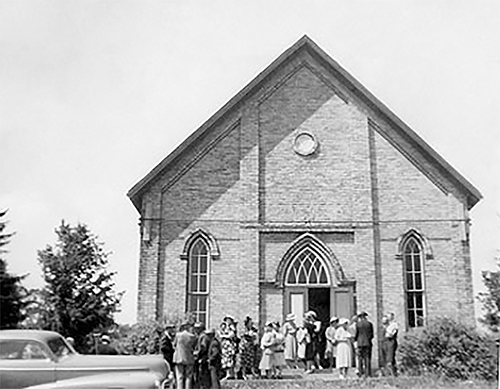
Knox Presbyterian Church, Warwick. Courtesy D Aitken.
The annual Sunday School picnic was a major event. Ipperwash Beach was the favourite choice (in my opinion). We ALWAYS had to wait an hour before going into the water after eating. That was the longest hour! At Ipperwash Park, there was a cage, and in it were usually a couple of racoons, which seemed to fascinate us.
At least once a year, the preacher and his wife would come for dinner and of course, we would have to be on our best behaviour for that. Some of them were much nicer than others — even at my young age, I had an opinion about that.
In the 1960s and 1970s attendance steadily declined and Knox Presbyterian joined St. Andrew's Presbyterian Church, Watford. The closing service at Knox was on July 10, 1983. There had been 114 years of Christian worship in the Knox Presbyterian Church, .
St. Andrew's Presbyterian Church, Watford (1851–)
In 1851 the pioneers of Watford area who leaned to the Presbyterian faith established a log church on the 4th Line, approximately at the corner of St. and Confederation Line, with a burial ground adjacent. The first minister, Rev. William Dees, came bi-monthly from Adelaide, riding on horseback through the woods.
In 1863, the first minister to preach only in Twp. was Rev. James Fayette. His charge was and the 4th Line church. During his ministry a manse was built in Watford. In 1866 he left to teach at the Komoka Academy (Middlesex Seminary), a private college which prepared students for the medical and legal professions.
Rev. Ebenezer Bauld came as pastor in 1867, preaching until 1871, and in 1870 Knox Presbyterian Church, was opened. Separate Boards of Management were appointed for each church. In 1872 to 1879 Rev. John Abraham was minister. It was during his term that the church known now as St. Andrew's was built on property donated by Alexander McGregor at 5378 Nauvoo Rd., with a manse property adjoining. Following the opening of the church a Tea Meeting was held the next evening in the drill shed. The 1877 Lambton County Directory describes St. Andrew's as “brick on stone basement, gothic style, elegant manse, $15,000 built in 1876.”
Rev. Peter C. Goldie came in 1880. The practise of renting seats in the church was discontinued at this time. Land was purchased to build a shed and stable for the horses.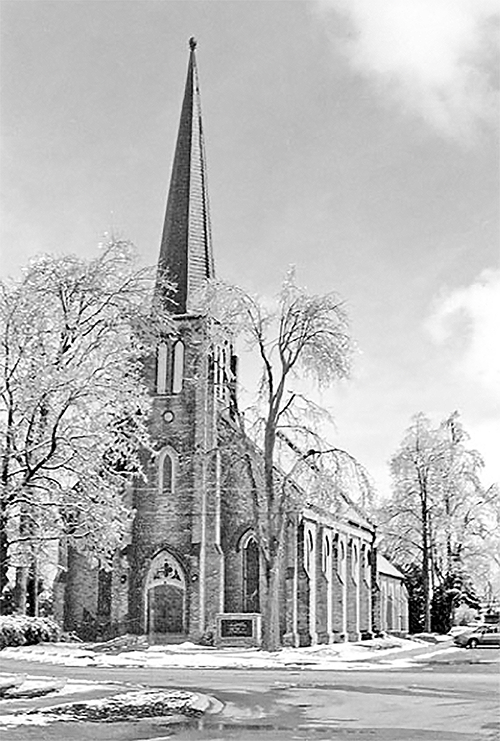
St. Andrew’s Presbyterian Church, Watford. Courtesy P Janes.
Rev. Hugh Cameron became pastor in 1884, and the Ladies' Aid was organized. In 1886 after much discussion an organ was installed, and the congregation changed its style of worship, standing to sing and reverently leaning forward during prayer.
In 1887 the Women's Foreign Missionary Society was formed. Rev. John Graham came in 1889. It was during his ministry that the Sunday school room was erected. This accommodated all weekly meetings as well as Sunday school. Electric lights were installed and renovations and repairs made. The Christian Endeavour Society was organized.
Rev. Robert Haddow was called in 1897 and stayed until 1901 when the Book of Praise was introduced and major changes in the form of worship were inaugurated.
Rev. E. B. Horne ministered from 1901 to 1912. At this time there was extensive remodelling. A furnace was installed and curved pews were purchased by the Young People's Society. Mrs. Horne organized the Home Missionary Society in 1907. In 1911, when the Congregational Church was destroyed by fire, the Presbyterian Church offered them the use of their facilities.
Rev. J. C. Forrester served the congregation from 1912 to 1921. In 1919 the spire needed to be rebuilt, as it had been struck by lightning.
1925 brought changes when the Methodist, Congregational and Presbyterian churches decided to unite nationally. Many Presbyterian ministers were in favour, but there were differences of opinion. St. Andrew's Church voted for union. The church was then known as St. Andrew's United Church.
Those wishing to remain Presbyterian were faced with problems. Negotiations were undertaken to rent the Congregational Church building and to apply for a minister. The Presbyterian followers were put in a charge with Chalmers (Brooke Twp.), Napier (Metcalfe Twp.) and Watford. Rev. T. O. Hughes was called as minister. At this time, from 1925 to 1961, the church was called Watford Presbyterian Church.
Later a decision was made to buy the Congregational Church property for $1200. In 1929 they purchased the McLeay home on Victoria St. for $2,350 to be used as a manse.
In 1940 the Watford congregation was joined with Knox in Twp. and Thedford. Rev. Scott was called as minister. The manse property was sold. In 1942 Rev. William Reynolds was called. By 1943 a new manse was purchased on Simcoe St. East.
In 1950 the minister moved to the manse in Thedford and the Watford manse was sold. In 1959 a new electric organ was purchased and new windows were installed in the church.
When the new United Church was built at the corner of Ontario and McGregor St., the United Church had no further use for St. Andrew's for worship and approached the Presbyterians with an offer to sell. After negotiations, the church was bought for $1, with certain stipulations regarding properties within the building. The name of the congregation was changed from Watford Presbyterian to St. Andrew's Presbyterian.
Other ministers who have served the Presbyterian congregations in Watford, and Thedford include Rev. Edward Hales, Rev. W. M. H. Chen and Rev. Venus Bibawi. From 1987 until 2008, Rev. Dr. Christine O'Reilly has been their minister, earning her doctorate during those years.
REFORMED
Grace Canadian Reformed Church, Watford (1953–1999)
The Grace Canadian Reformed Church of Watford, Ontario, was instituted on March 15, 1953, as the result of a large immigration from the Netherlands. The people wished to continue to serve the Lord as they had done in Holland. It began with meetings in houses, then in an upstairs room in Watford. Later they bought a manse and met in the front room for Sunday worship. In 1963 they bought Grace Anglican Church on Confederation Line, east of Watford.
In 1995 the members began to make plans to purchase property on County Road 6 in Kerwood, where they started to build in 1998. Many volunteers helped to speed the process and the new church building was completed in March 1999. This became the Grace Canadian Reformed Church of Kerwood.
RELIGIOUS SOCIETY OF FRIENDS
The Religious Society of Friends, commonly known as Quakers, built a church shortly after 1853 in the Arkona area. It was a frame building located on the east side of Quaker Road (21 Sideroad) at Townsend Line on Lot 22, Con. 6 NER. The lot was donated by Levi Hilborn.
Services ended early in the 1900s and the building was moved away in 1911.
ROMAN CATHOLIC
Our Lady Help of Christians Roman Catholic Church, Watford (1875–)
(submitted by Julia Geerts)
Prior to 1875, the Catholic mission church in Village served the faithful of Twp. By the time Father Henry Japes had purchased land just north of Watford for a local cemetery, it was also evident that a church was needed in Watford, since the centre of Catholic population had shifted with the building of the Great Western Railway through Watford. The year 1875 saw a church built in Watford on land donated by John Roche. It was located at the corner of St. and Victoria St. On July 6, the cornerstone was laid and blessed by Bishop J. Walsh, Bishop of London.
The cornerstone was provided by Campbell and Contis of Strathroy. The tin box in it contained an inscription which named Pope Pius IX being in his 30th year as pontiff, Queen Victoria in the 38th year of her reign, Earl Dufferin as Governor-General of Canada, Alexander McKenzie as Premier of Canada, D. A. McDonald as Lt.- Governor of Ontario, John McLean as Reeve of Watford. Also deposited was a copy of the Watford Advocate, the Watford Guide, the Strathroy Dispatch, the Western Dispatch and the Freeman's Journal, N.Y. The building contractor was P. Cameron under the supervision of Thomas Fawcett, but most of the building was done by volunteer labour hauling stone with team and wagon from the shores of Lake Huron and bricks from the township's brickyards. Bishop Walsh returned on December 5,1875, to dedicate the church as Our Lady Help of Christians.
The 1877 Lambton County Directory records that the church was “substantial brick, erected in 1870 for $7,000.”
Our Lady Help of Christians Roman Catholic Church, Watford. Courtesy D Aitken.
For the first 53 years Our Lady Help of Christians was a mission of Strathroy. The pastor of All Saints Church, Father Henry B. Lotz (1874–76), travelled to Watford every second Sunday, as he had previously to Village. Later priests came three Sundays a month. Before automobile transportation Fred O'Neil remembered going with his father to pick up the Strathroy priest, most likely Father Quinlan, with horse and buggy on County Road 39. Someone from Strathroy brought the priest halfway and after the Watford mass the O'Neils would return him back half way.
In 1928, Our Lady Help of Christians ceased to be a mission of Strathroy. It was elevated to parish status with the appointment of Father Glavin (1928–39) as its first pastor. At first Father Glavin could not afford a car, so either Carmen Harper or Mr. Auld, neither of them Catholic, gave him a ride to Alvinston to say mass. Father Glavin must have been a hockey enthusiast, as he is pictured in a 1930 Watford Ontario Hockey Association Club group picture. His successor was Father Francis J. Bricklin (1939–42).
In 1942, John Anthony Ruth, son of Edward and Margaret Ruth, became the first member of the parish to be ordained a priest. He joined the Basilian order. In 1967, Peter Sanders became the second member of the parish to be ordained, joining the Jesuit order.
By this time, the population of Our Lady Help of Christians had declined markedly as families left the farms for larger centres. Consequently, Father Leon M. Blondell (1942–52) moved to Alvinston and Our Lady Help of Christians became a mission again. By 1950 the congregation had dwindled to only 25 families, including Maher, Callahan, Carroll, Caughlin, Roche, Gavigan, Orrange, O'Neil, Walsh, Ruth, McManus and Dolan — all descendants of original Twp. pioneers.
The late 1940s and early 1950s saw a large influx of new Canadians, mainly from Holland. Some of the first to arrive were the Verhoeven, Van den Broek, Van Bree and Straatman families. Consequently, in 1956, Watford was once more a parish with a Dutch-speaking priest, Father Peter A. Oostveen (priest from 1956–69).
By 1955 a one-room Roman Catholic Separate School, St. Christopher's, was built on the corner of Hwy 79 and Hwy 22, through the encouragement and support of the Dutch community.
Mac and Bernadette Tait had vacated their apartment above the egg grading station on the corner of Erie and Main St. and offered it as the new rectory. Father Oostveen could hear the crowd screaming during hockey games in the arena behind. In 1958, during his pastorate, the church was renovated with a new altar addition so that the seating capacity was increased from 120 to 320. A new attached rectory was built. St. Peter Canisius Roman Catholic Separate School was built behind the church. The church, rectory and school were dedicated by Bishop Cody on January 18, 1959.
In 1900 a women's group was formed that was known as the Altar Society. These women took care of the sacristy, altar furnishings and linens. The first president was Mrs. David Roche (nee Mary Ann O'Meara 1856–1937). By 1932 there was also a Women's Communion League who prepared the children for First Communion.
The Catholic Women's League was established in 1958 with Jeanne Ruth as President, Alicide Simard as Vice-President, Edna Kroetsch as Secretary and Sien Van Loon as Treasurer. They had 18 charter members. The Catholic Women's League (CWL) is an organization that contributes to the life and vitality of the church, family and community, both at home and abroad. The league was organized nationally in 1920.
As years went by, other groups were formed as well. The first Parish Council was formed in 1968 with John Van Lieshout as Chairman, Celestine McManus as Secretary and members Jeanne Ruth, Edward St. Pierre, Mac Tait and Martin Minten Sr. A local council of the Knights of Columbus, named for St. Isadore the Farmer, was formed in 1989.
In 1973 Corry Van Gorp and Pat Hogervorst formed a new folk choir. Stella McManus had been organist for the senior choir many years before that. Our Lady Help of Christians is renowned for its talented choirs and an active Watford-Alvinston Catholic Youth group.
During the last quarter of the twentieth century further renovations and improvements were made to the church. These included new stained glass windows, a domed sanctuary and new steps with a ramp for the handicapped. New office facilities were constructed in the church basement, together with a new kitchen and renovated meeting room. Father Michael J. O'Brien (priest from 1989–2003) was greatly involved when the ecumenical movement in Watford began with the other churches.
Each December the Watford CWL has a potluck supper and skit night when they invite the other women of the community. In February the ladies have a Valentine mother/daughter/sister/friend fun night with a guest speaker. Our Lady Help of Christians Watford Catholic Women's League will celebrate its 50th anniversary in 2008.
Our Lady Help of Christians celebrated its 125th anniversary in 2000. Up to 2006, there were, on average, 35–40 baptisms, 8–10 weddings and 3–4 funerals a year. In 2007 St. Matthew's church in Alvinston was closed and Our Lady Help of Christians now serves a broader area.
Roman Catholic congregation, Arkona
In 1863 a Roman Catholic congregation was organized in Arkona. Services were held one Sunday a month. The little mission was never large enough to appoint a full time priest and it soon closed. The Roman Catholics of the area now attend mass in either Forest or Watford.
Roman Catholic Mission Church, Village (1855–1875)
(submitted by Julia Geerts)
The potato famine of the 1840s drove Irish Catholics to seek a new life on farms in Twp. It is believed Jesuit missionaries visited this area and that Fathers Michael R. Mills and Patrick O'Dwyer of London had Twp. as a station in the late 1830s and early 1840s.
One of the first Catholic settlers of Twp. was John Roche, son of widowed Hannora Roche, who had settled in 1841 on Lot 9, Con. 3 SER just south of Village. He married Mary Lewis, the daughter of pioneers Richard and Bridget Lewis from Lot 28, Con. 2 SER (Zion Line). The wedding was conducted at Walpole Island in 1848 by Jesuit priest Rev. Dominique Duranquet.
It is said that Father Duranquet came to from Walpole Island as early as 1844, and that the Jesuits continued to make periodic visitations until 1854. By 1849 Dean Thadeus T. Kirwan of London also ministered on horseback to the Catholics of the area. He continued in this manner until 1864, even after he was transferred to Sarnia. The earliest record of his visiting “ Town” was on November 24, 1849, when he baptized a child. It was probably he who oversaw the 1850 grant of land to the Roman Catholic Corporation of Sandwich. This was Lot 25, north of Barford St. (now part of the Conservation Area) and east of the former Park St. on 9 Sideroad, now Village Rd.
While it is said in one secondary source that a Father O'Donovan built a log church and laid out a cemetery in in 1855–56 and, in another, that a log church was built here in 1859, it would appear that the first Catholic church in , seating approximately 200 persons, was still unfinished at the time of the 1861 census. It was then valued at $400. It was built near the corner of 9 Sideroad and Hwy 7, near the present conservation area. This church, when opened, probably drew families from Plympton Twp. as well. It is not known if it ever had been dedicated with a name.
In 1867, became a mission of Wyoming, with the appointment of Father Henry Japes (1867–72), as its first pastor. One of the early Catholic marriages recorded was in 1869 between Michael Gavigan, 34, born in Ireland, son of Patrick and Mary Gavigan, to Mary Ann Cox, 26, born in Ireland, daughter of Andrew and Catherine Cox.
With the completion of the Sarnia branch of the Great Western Railway in 1858, Watford surpassed in demographic and economic importance, as the local population, trade and commerce gravitated to the village on the rail line. Thus, in 1871 Father Japes oversaw the purchase of two acres for a new Catholic cemetery, on the south-east corner of Lot 18, Con. 3 SER, just north of Watford on Nauvoo Rd.
The mission was detached from Wyoming and attached to Strathroy in 1875, and its pastor, Father Henry B. Lotz (1874–76) celebrated Mass every second Sunday in . However, this was only for a short time. As the Catholic population in the Watford area increased, it necessitated the building of a church there. It was probably in late 1875 that the mission church in was closed. It was sold by public auction in 1878.
SWEDENBORGIANS
Several residents of Twp. listed themselves as Swedenborgians in the early censuses. Nothing is known about where, or if, they met as a group. The Swedenborgian church bases its teachings on the Bible as illuminated by the works of Emanuel Swedenborg (1688–1772), a Swedish scientist and theologian.
CEMETERIES
Arkona Cemetery
The Arkona Cemetery is located on the eastern edge of the village on the hillside on the north side of Town- send Line, just outside Twp. Many Twp. residents are buried there. A document dated June 1, 1867 stated that Nial Eastman gave the land for the initial segment of the cemetery for the sum of one dollar. This is the west section with the old headstones.
The cenotaph, the memorial to the fallen of World War One, was erected by the Arkona Women's Institute and the citizens of Arkona, , Bosanquet and West Williams. This statue was dedicated in June 1923. The names of those who died in World War Two were added. Each year in November people of the community gather around the cenotaph for a Remembrance Day service.
The Women's Institute initiated the first clean-up day and made improvements to the cemetery. They began the annual Decoration Day in June, 1954. In recent years the second Sunday in June has become a time of reunion for people who have moved from the local area to come back to Arkona. The responsibility for the care of the village cemetery has now passed to the municipal council and is administered by a Cemetery Board.
The names on the stones were transcribed by a small group of volunteers and published by the Arkona and Area Historical Society in 1985. This information has been updated and supplemented with photographs of the gravestones and newspaper obituaries and photographs of some of the people buried here.
The area for the cemetery has been enlarged several times, most recently in 2007 with the purchase of some property from the Don Marsh family.
Bethel Cemetery
Gravestones show Alexander Thompson died June 1, 1846; William Luckham died October 4, 1848; and his daughter on October 24, 1848. These dates confirm there was a cemetery before land was purchased in 1863 for a church and cemetery. About 1892, one acre of land was sold by Peter Graham Jr. for one dollar and a burial plot, to enlarge the cemetery.
Perpetual care was started about 1925 by John F. Smith, who was the Secretary-Treasurer for many years.
At a 1984 meeting of the Township Council a new cemetery committee of five members, three of which were chosen ratepayers, was appointed for two terms of the township council. Clarence Cable, Kenneth Vance, Lawrence Cates, Jack McPherson and Frank Van Bree, known as the Trustees of the Bethel Cemetery Board for the management and operation of the Board, signed the agreement with the Reeve and Clerk. Roy Cable volunteered to act as caretaker of the cemetery.
Bethel Cemetery continues to serve a wide area of the township as well as the surrounding villages.
Mennonite Cemetery
The cemetery remains in the former Mennonite churchyard, surrounded by tall evergreen trees. The earliest burial was in 1849. For many years Leah and Lottie Morningstar cared for the grounds. In 1966 Township Council passed a motion that the Reeve and Clerk be authorized to sign an agreement between the Township and the Deacons of the Reformed Mennonite Church of Wilmot Twp. (Waterloo County), regarding perpetual care and trust funds for the Mennonite Cemetery. After 1973 this cemetery wasn't used for many years, but a descendant of the Sitter family was buried there in 2004.
Mennonite Cemetery. Courtesy P Janes.
The Mennonite Cemetery continues to be under the care of the Township Council.
Robertson-Wallace Cemetery (1851–1961)
The Robertson-Wallace Cemetery, located at the corner of Wisbeach Rd. and Egremont Rd., is not associated with any particular religion or church. This cemetery land was granted to John Wallace by the crown. Several members of the two families are buried here. The cemetery is looked after by the Township of .
One tombstone that is unusual is the square memorial marking the grave of Lieut. James Robertson (1784–1862), of Her Majesty's 79th Regiment (Foot). It lists the battles in which the deceased participated: Toulouse, Salamanca, Nive, Fuentes, D'Onoro, Neville, Basago, Pyrenees, Coruna and Waterloo. These were all part of the struggle against the forces of Napoleon, both defeats and victories. Lieut. Robertson located in in 1850, on a farm within sight of the little graveyard where he was laid to rest 12 years later.
Roman Catholic Cemetery, Village
Several settlers were buried in the cemetery beside the church. There were a number of carved oak headstones and only a few white marble slabs. When the centre of activities moved to Watford this graveyard was no longer used. After many decades the abandoned cemetery at became overgrown. The Roman Catholic Church deeded the land to Twp., which deeded the eastern part to the St. Clair (formerly Sydenham) Conservation Authority. When the land was being cleared in 1972 for the conservation area the ten remaining gravestones were placed in a cairn in the form of a brick wall, the only evidence of the Catholic mission church and cemetery that were once located in the village.
Based on the dates of death noted on the gravestones, the cemetery was in use between 1858 and 1876. The earliest burials are not known; their wooden crosses have long since disappeared.
According to a newspaper article the remains of some deceased family members were removed over time from the cemetery at to the new Catholic cemetery north of
Watford. Timothy and Annie, the children of Andrew and Annie McDonnell, had died in 1875 and were buried in the cemetery. When their remains were re-interred in the Watford cemetery in 1884, the bodies were found to be petrified, every feature being as true as when interred.
St. Mary's Cemetery, Village
This cemetery is beside St. Mary's Church, on the south side of Highway 7 in Village.
In 1849 the members of St. Mary's Anglican Church signed a petition requesting additional land to enlarge the cemetery.
In 1932 the Cemetery Fund was started to provide perpetual care for the cemetery plots. Two older members of the congregation, Nathaniel Herbert and Albert Archer, levelled the ground and repaired old stones and generally improved the condition of the cemetery.
St. Mary’s Anglican Cemetery, Warwick. Courtesy P Janes.
St. Paul's Anglican Church Cemetery, Wisbeach
The first burial at St. Paul's Cemetery was that of Joseph Smith, aged 23 years, on July 18, 1856. Captain and Mrs. Alison are also buried in St. Paul's Cemetery.
At a vestry meeting in January 1926 it was decided to improve the appearance of the cemetery. At first each plot owner was asked for a yearly donation of $2 for a full plot or $1 for a half plot, to cover the expenses of cutting the grass and maintaining the cemetery grounds. As this was insufficient it was decided to set up a perpetual care fund to be invested with the Diocese of Huron, with the interest coming to the cemetery board each year.
As a memorial, Mrs. Jones gave the gateway pillars at the entrance to the church grounds and cemetery and a new fence to enclose the property. One pillar contains a tablet given by the Hambley Bros. in Strathroy in memory of Mr. Jones who died at sea. Mr. Kirvell of built the pillars. A service of dedication was held in 1927.
St. Paul's Cemetery has a presence on the internet. There are pictures of gravestones and of many of the people, as well as obituaries. http://freepages.genealogy.rootsweb.com/~jaiwilliams/Wisbeach
United Church Cemetery
On the 21st of September 1858, seven acres of land was purchased from the crown for a church and parsonage. The plans must have changed because this land was later used as a cemetery and is now known as the United Church Cemetery on 9 Sideroad. Another piece of property of one and three quarters acres of land just south of the highway was leased for use as a cemetery in 1870 and was used for a short time.
The earliest recorded burial is John Wilson, who died in September 1850 in St. Catharines, Ontario. Three ordained ministers are buried here: Rev. Shaw, Rev. Wilfong and Rev. Wright. Uncle Joe Little is buried here.
This cemetery continues to serve the community in 2008.
Watford Cemetery
The Watford Cemetery is about one mile north of Watford on the east side of Nauvoo Road. A bylaw was passed in 1888 empowering the Corporation of the Village of Watford to raise by way of loan the sum of $1500 for the purpose of paying for a site for a cemetery, fencing and improvements to the same. By a grant dated May 26, 1888, the north 11 2/5 acres of Lot 19, Con. 4 SER was purchased by the Corporation of Watford from William Deas Cameron and his wife for $850.
A piece of land to enlarge the cemetery was added in 1969. The cemetery is administered by the Watford Cemetery Board.
Watford Pioneer Cemetery
The original Presbyterian Church on Confederation Line at St. had a cemetery located next to it. That old cemetery is now marked by a cairn. In 1855 a half acre of land was set aside for burials and many early Presbyterian families from the area were buried here. By 1888, 207 burials had been recorded. Circa 1887–1888 Watford Council purchased a new cemetery property on Eighteen Sideroad (Nauvoo Rd.), north of Watford. Over the years the little Presbyterian cemetery became run down and neglected.
In 1967, the Watford community, headed by Rev. Ross Cumming, decided to clean up the old cemetery as their centennial project. Some tombstones were in poor condition. Cemetery records could not be located. Rev. Cumming prepared a list of known burials and readers of the Watford Guide-Advocate were asked to check the list and supply additional names. The existing stones were embedded in brick walls and an attempt made to find out as much as possible about these early burials. On September 20, 1970 a dedication service was held and at that time the cemetery came under the care of the village.
Watford Roman Catholic Cemetery
In 1871 Father Japes, on behalf of the Roman Catholic Episcopal Corporation, oversaw the purchase of two acres of land for a burial ground just north of Watford on the west side of Nauvoo Road.
In 1972 a single plot cost $50 while a double cost $80. In 1976 a new centerpiece, statue, shrubs and entrance pillars were erected to beautify the parish cemetery known as Our Lady Help of Christians Cemetery.
Sources
These links were used at the time of publishing in 2008. Some links may have changed or may no longer be active.
Arkona Women's Institute, Tweedsmuir Books, 1909–1976.
Belden's Illustrated Historical Atlas of the County of Lambton, edited and published with additions by Edward Phelps, 1973.
A History of Bethel Methodist Church 1863–1963.
Alan Campbell, Places of Worship Records Inventory – Township and the Towns of and Watford, Lambton County, Ontario, Ontario Genealogical Society Lambton County Branch.
Adeline Hawken, A Brief History of St. Stephen's Church, Arkona, Ontario, 1967.
The History of United Church 1834–1975, Watford Guide-Advocate, 1975.
J. Keith Howden, St. Paul's Church, Wisbeach, 1856–1975, Watford Guide-Advocate, 1975.
Mary Janes, Joseph Russell Little: Saddle Bag Preacher, 1993.
William Frederick Johnson, Arkona Through the Years, 1976.
William Frederick Johnson, A Century of Praise Worship and Witness, Arkona Bible Chapel, 1990.
Hon. D. F. Kent, ed., St. Stephen's Anglican Church, Arkona, A Century of Faith 1907–2007.
Lambton County Directory, “Town of Forest,” 1877.
Eleanor Nielsen, ed., Pioneers and Preachers: A History of the Forest United Church, Pole Printing, 1977.
Eleanor Nielsen, The Egremont Road, 1993.
100 years in the Life of Knox Presbyterian Church, 1869–1969.
Ontario Genealogical Society, Lambton County Branch, Lambton Settlers Series, Volumes 3 & 4: Early Days in Brooke and Warwick.
Ontario Genealogical Society, Lambton County Branch, Lambton County Cemeteries, Bethel Township.
Our Lady Help of Christians 1875-2000, Life Touch, 2000.
Our Lady of [sic] Help of Christians, Our Parish Family 2004.
Lillian Ross, Souvenir Book of Fiftieth Anniversary Knox Presbyterian Church, Warwick.
Pearl Moffit Sisson, Bethesda Church 1880–1955.
St. Andrews Presbyterian Church Centennial 1873–1973.
St. Paul's Cemetery website, http://freepages.genealogy.rootsweb.com/~jaiwilliams/Wisbeach/ accessed April 12, 2008.
Greg Stott, Sowing the Good Seed: The Story of Arkona United Church.
Swedenborgian Church website, http://www.swedenborg.org/ accessed April 12, 2008.
Trinity Church Watford 1868–1968.
Women's Institute, Tweedsmuir Books, 1949–present.
Watford Centennial Book, 1973.
Watford Gospel Hall information. Raymond and Sunday Thompson.
Watford Guide-Advocate, 1927.
M. Dorothy Wordsworth, One Hundred & Forty Years at St. Mary's Church, , 1974.
*Information has been modified from the publication, The Township of : A Story Through Time (2008).


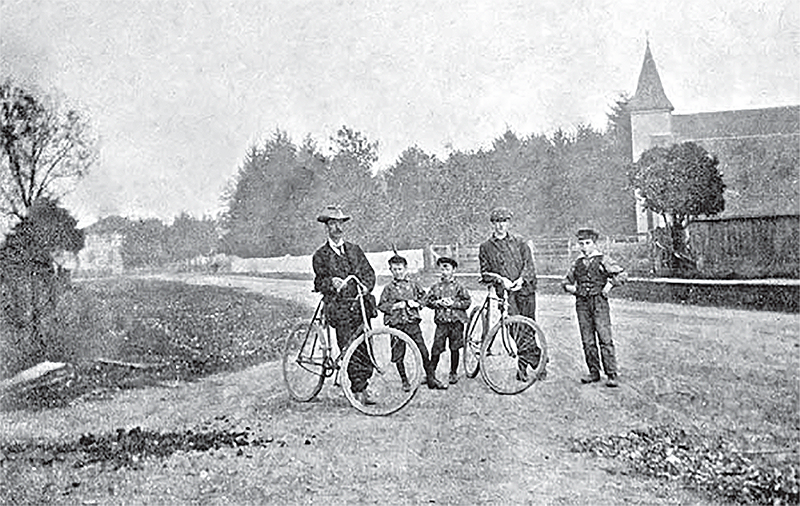
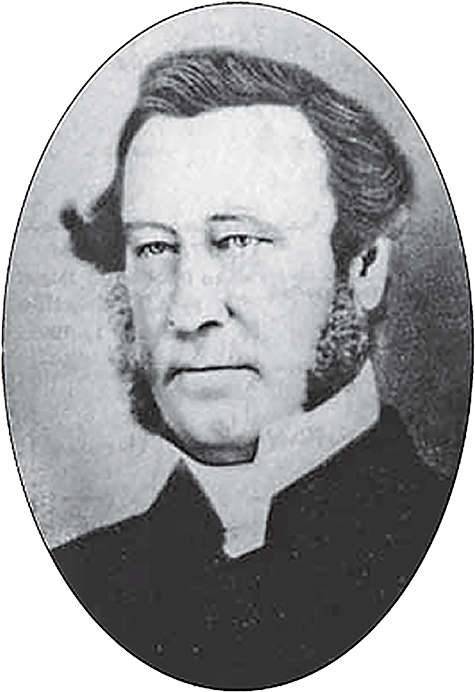


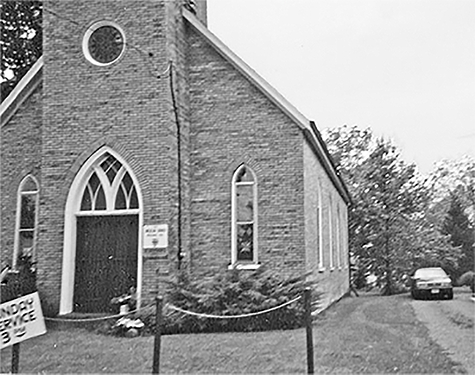
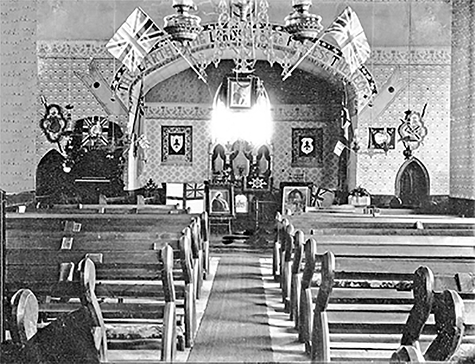
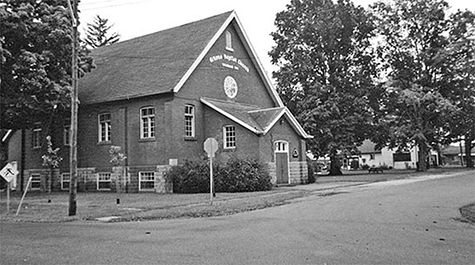
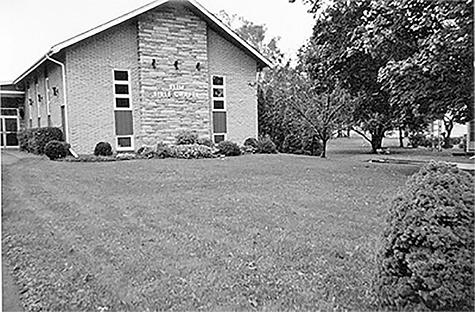
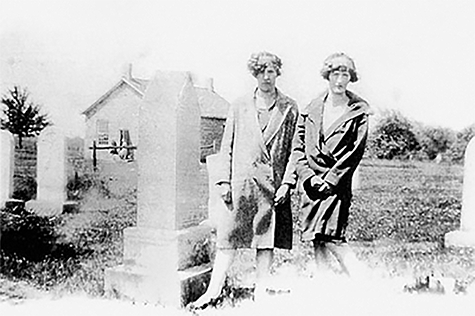

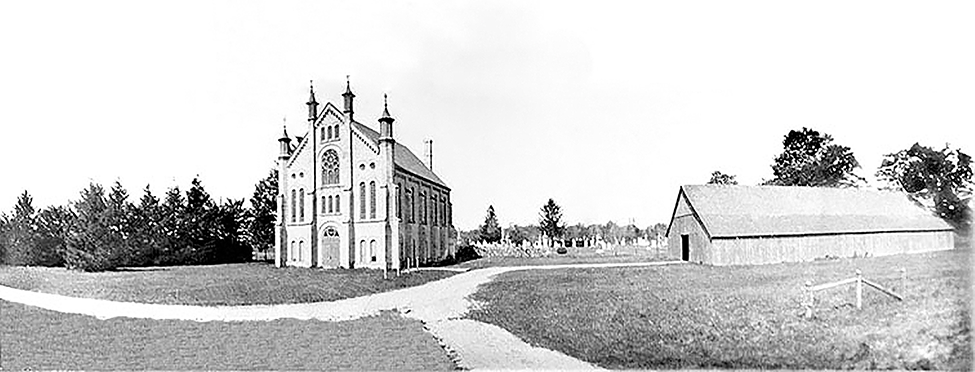

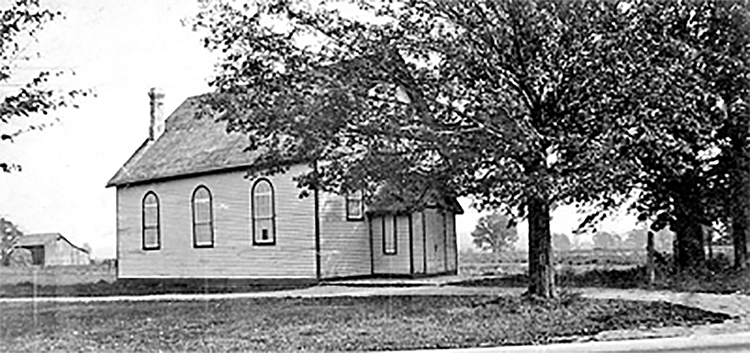
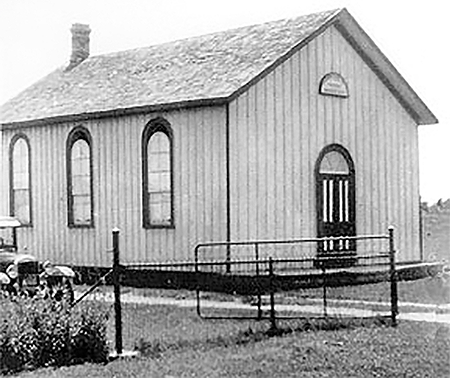
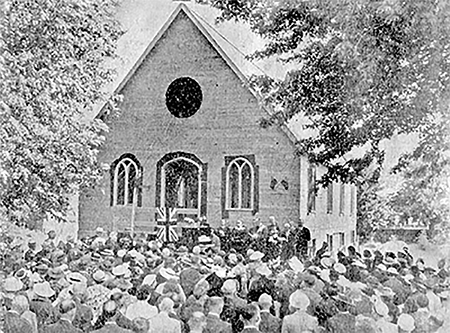
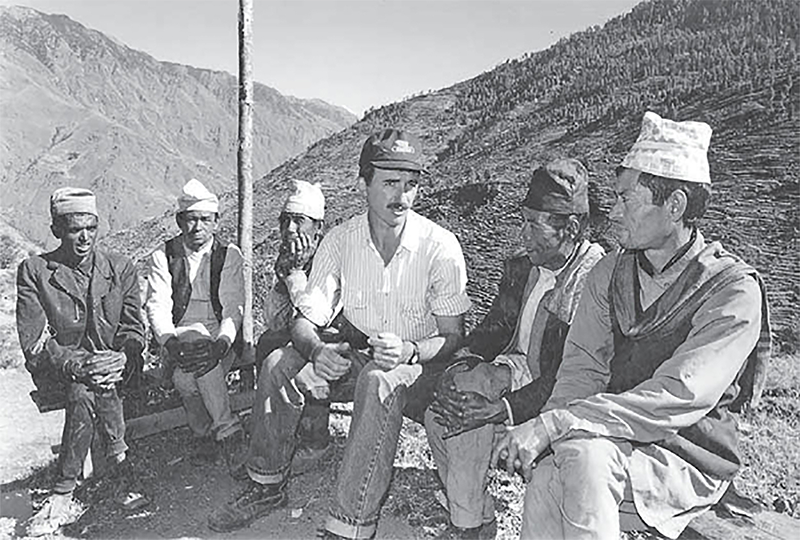
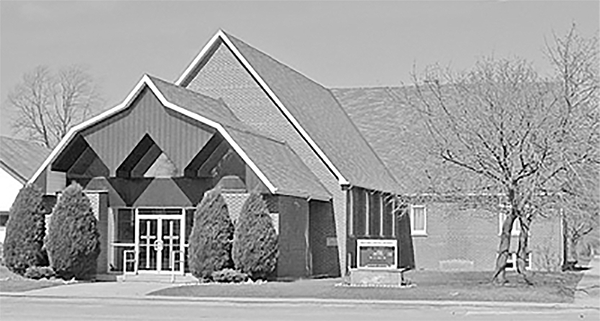
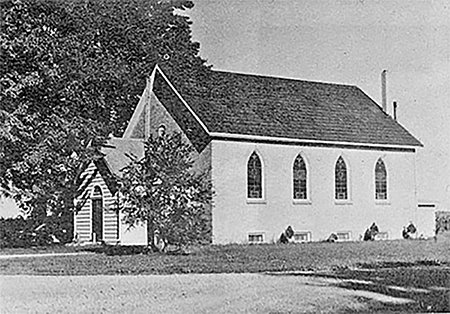
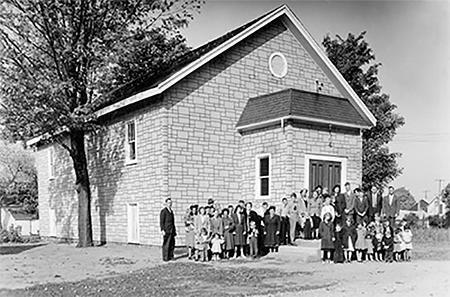
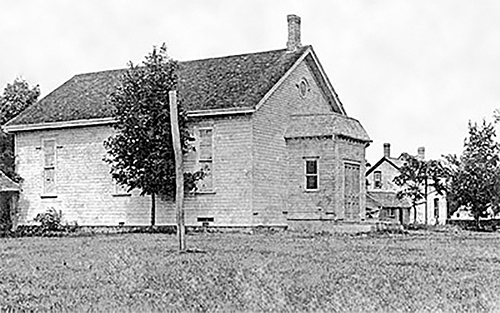

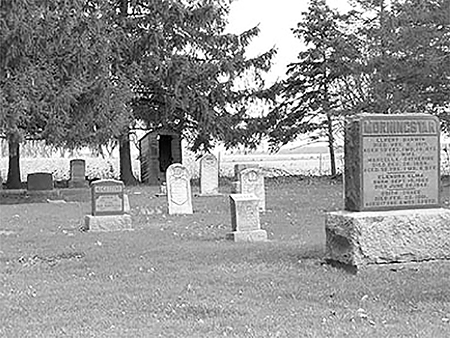
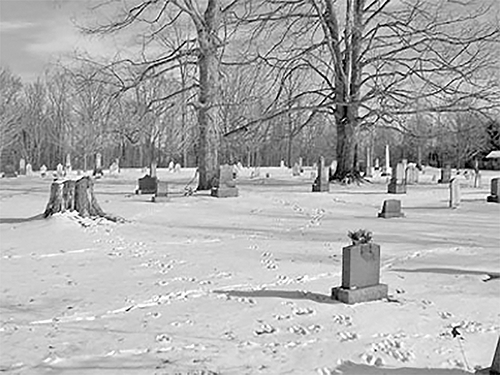
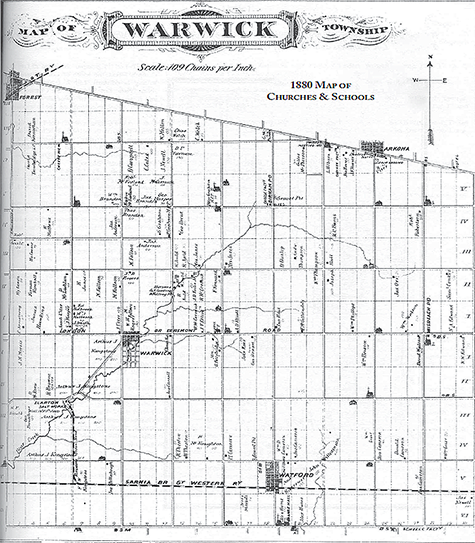
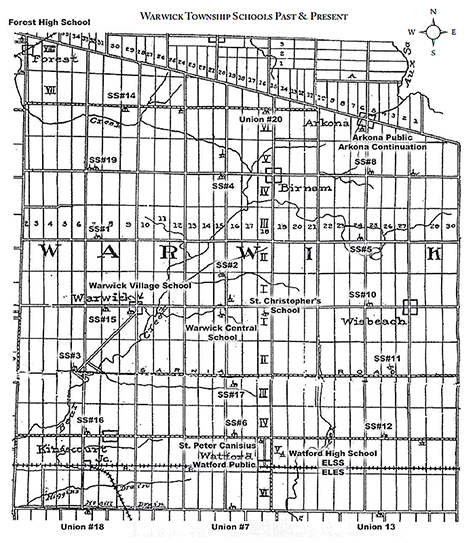
 Subscribe to this page
Subscribe to this page